
























Paul Adams
Pricipal, Providence St. Mel School

Bernard Clay
DECEMBER 12, 2025 • 6:00PM - 9:00PM
GARFIELD PARK CONSERVATORY 300 N. Central Park Avenue | Chicago, IL 60624 - Caribbean Themed -

For more information contact: Della Akres @ 773-854-8313 or drakres@habilitative.org
This year’s event we will honor leaders and pioneers in education innovation and impact; individuals who have demonstrated a profound commitment to advancing equity and excellence in education, such as:
Carol D. Lee, Ph.D.

Executive Director, Introspect Youth Services, Inc.
Creasie Finney Hairston
Professor and Dean, UIC Jane Addams College of Social Work
Edwina S. Tarry Professor Emerita, School of Education and Social Policy, Northwestern University

Haki Madhubuti
Poet, Founder and Publisher, Third World Press
Lisa Rollins
Regional Development Director, Midwest Region, United Negro College Fund
David Sanders
President, Malcolm X College
Please join us as we celebrate our education leaders, HSI’s impact, and bring the Caribbean to Chicago’s Westside through delicious Caribbean food, and live reggae entertainment.
Habilitative Systems, Inc. (HSI) is a multi-faceted behavioral health and human service agency serving the predominately African American populace on the West and Southsides of Chicago. Habilitative Systems, Inc. (HSI) founded in 1978, grew out of the Clair Christian United Methodist Church community ministry and is a community-based service organization serving the West Garfield, North Lawndale, Austin, Humboldt Park, Englewood, and Bronzeville communities.
Habilitative Systems, Inc. (HSI) is a multi-faceted behavioral health and human service agency serving the predominately African American populace on the West and Southsides of Chicago. Habilitative Systems, Inc. (HSI) founded in 1978, grew out of the Clair Christian United Methodist Church community ministry and is a community-based service organization serving the West Garfield, North Lawndale, Austin, Humboldt Park, Englewood, and Bronzeville communities.
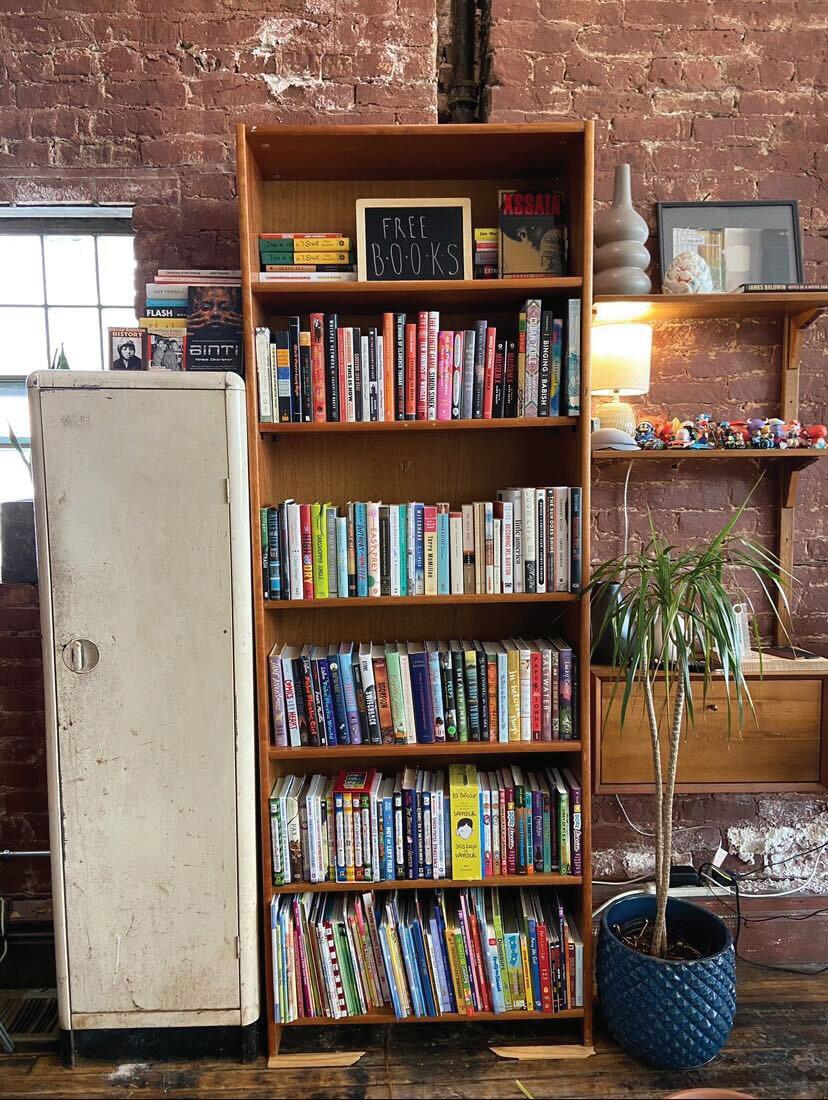


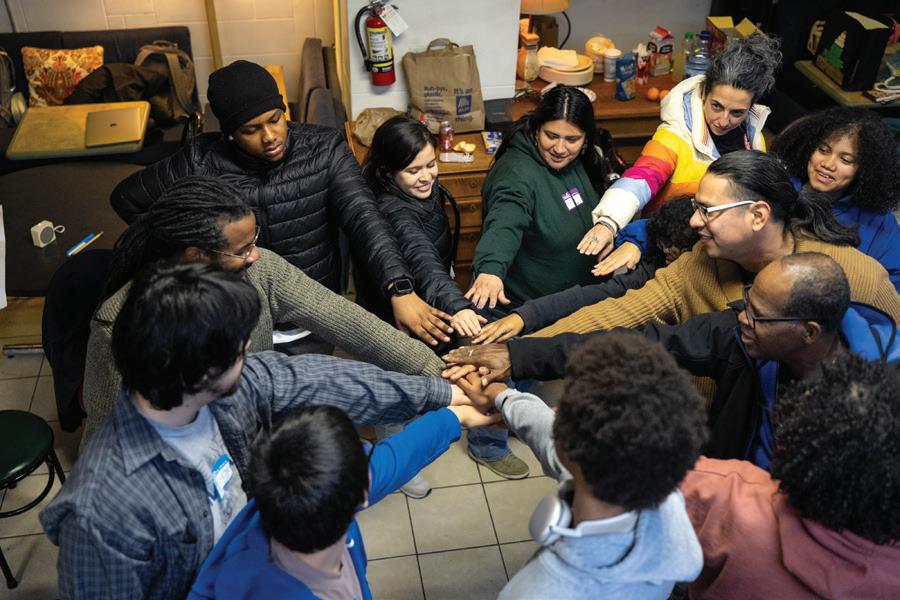
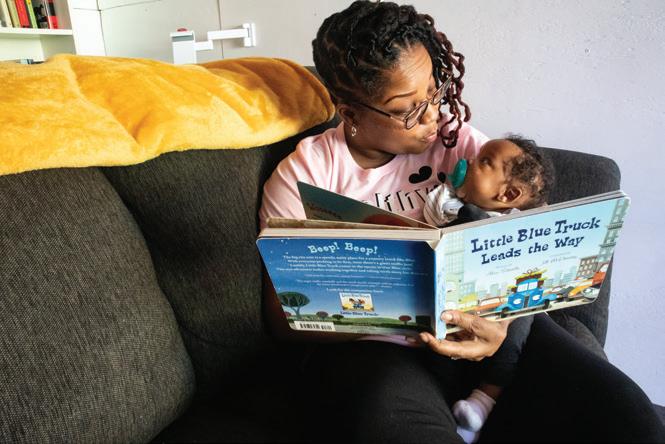

Interim Executive Director Max
Contributing Reporters
Deborah Bayliss, Hector Cervantes
Development Manager Mary Ellen Nelligan
Contributing Editor Donna Greene
Design/Production Manager Andrew Mead
Editorial Design Manager Javier Govea
Project Designer Susan McKelvey
Illustrator Vanessa Garza
Senior Audience Manager
Stacy Coleman
Contributing Photographers Todd Bannor
Marketing & Adver tising Associate Emma Cullnan
Senior Media Strategist Lourdes Nicholls
Operations Associate Susan Babin
Circulation Manager Jill Wagner
Senior Advisor Dan Haley
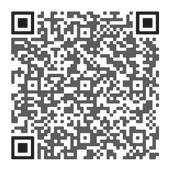





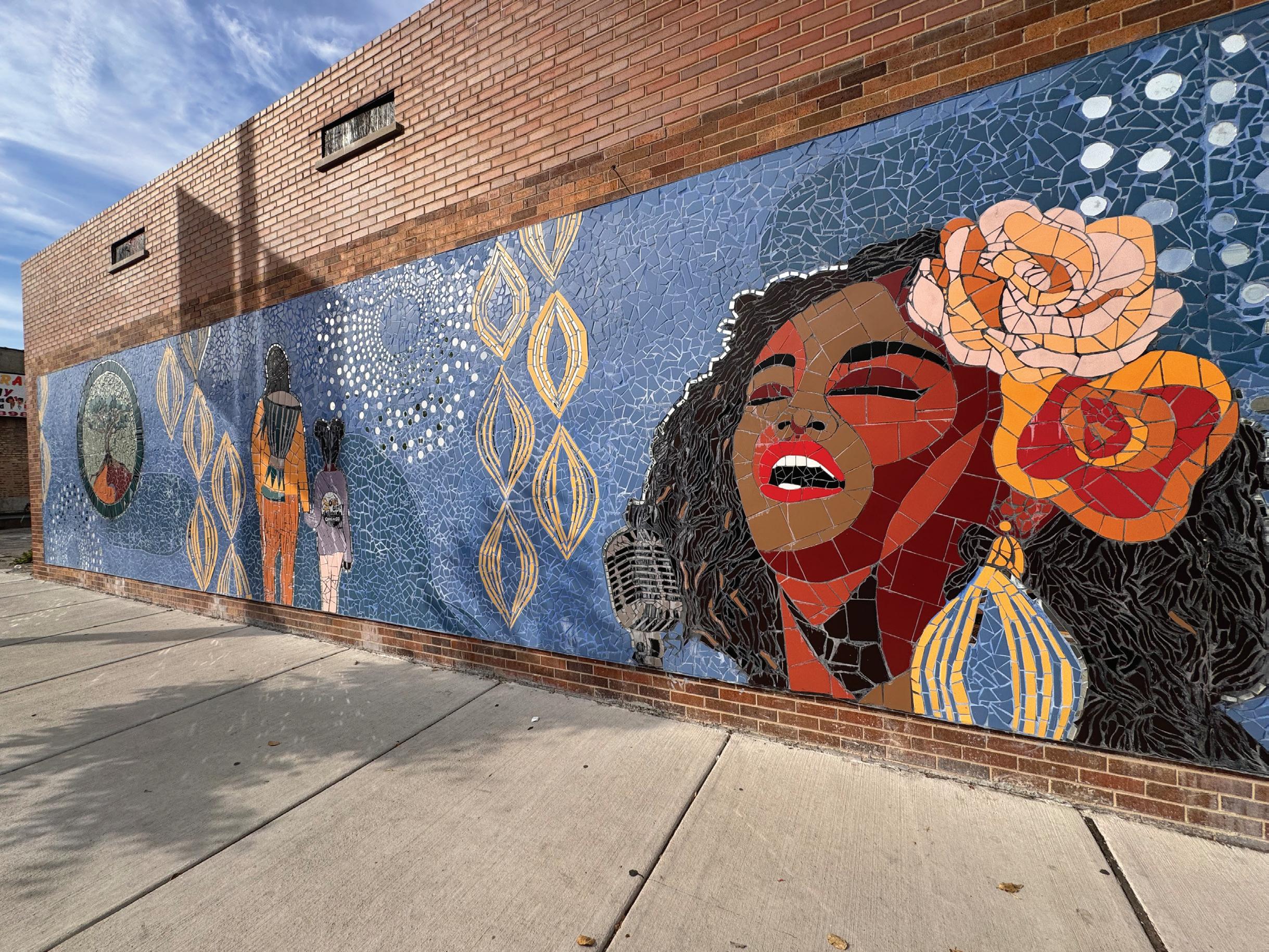
ative justice project of the county court system is genuinely intercepting young people and opening a new path to opportunity and accountability, our reporters have told real stories about living in Austin, Garfield Park and North Lawndale
Austin Headquarters 5100 W. Harrison St. Chicago, IL 60644
773-227-2880
Humboldt Park Office 1750 N. Kimball Ave. Chicago, IL 60647
www.buildchicago.org

longer stories about the exceptional people and organizations which are doing so much for our neighborhoods.
Thanks for reading West Side Magazine.

Dan Haley Edito

HOW TO REACH US
ADDRESS: PO Box 6670, River Forest, IL 60305
PHONE: (708) 366-0600
CIRCULATION Jill@oakpark.com ONLINE w ww.AustinWeeklyNews.com
Austin Weekly News is published digitally and in print by Growing Community Media NFP. It is distributed free of charge at locations across Austin and Gar eld Park. Our hours are Monday through Friday 9 a.m. to 5 p.m. Adver tising rates are available by calling our our main phone number. Printed entirely on recycled paper. © 2025 Growing Community Media NFP.
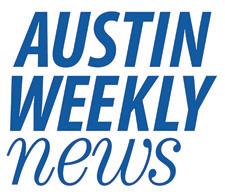
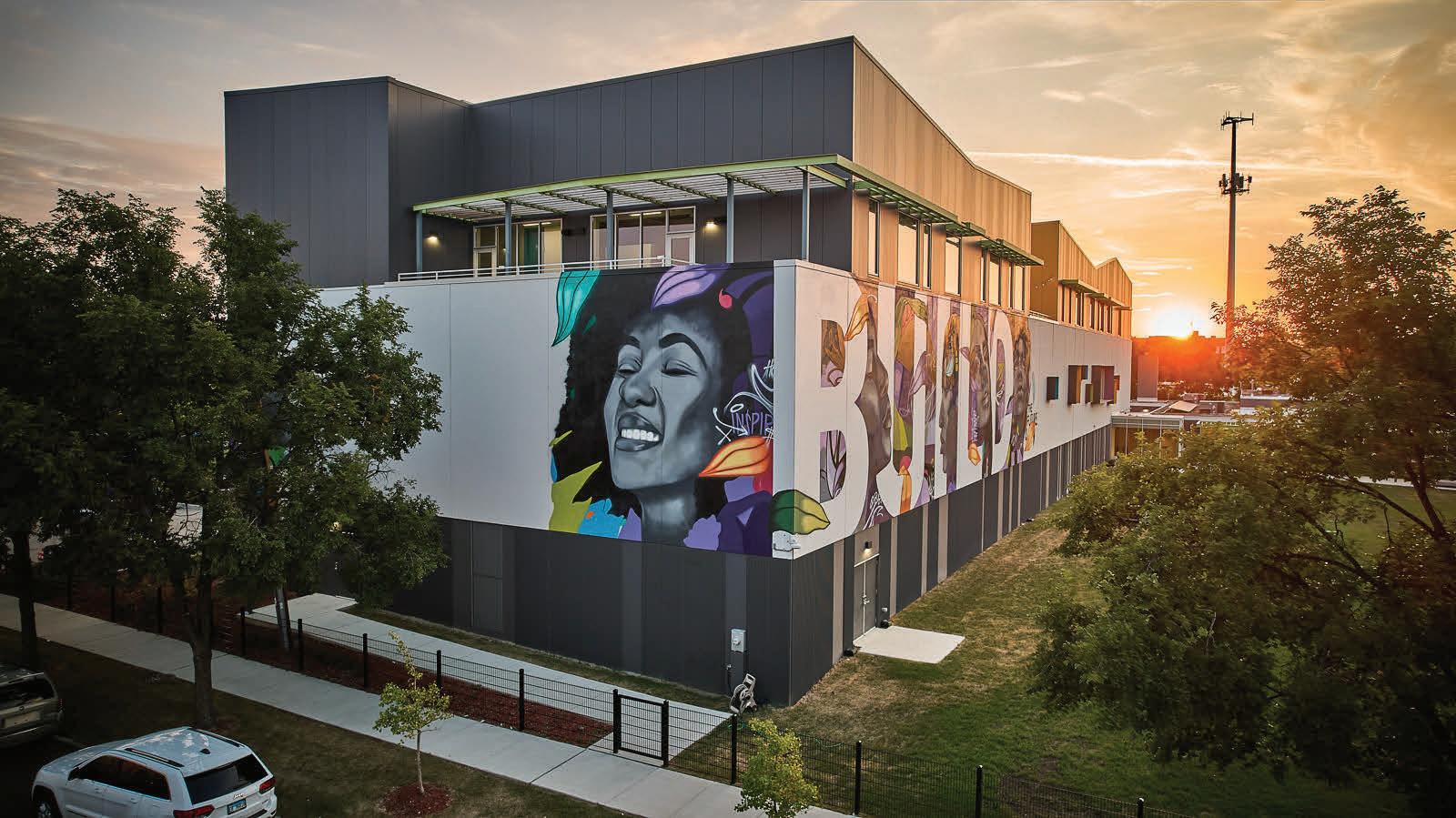











October 26

Michelle Wynton, violin

BEETHOVEN Triple Concerto
BEETHOVEN Symphony No. 3,
26
Michelle Wynton, violin; William Cernota, cello; David Leehey, piano
2025/2026 Fall & Winter Concerts
BEETHOVEN Symphony No. 3, Eroica

Wynton, violin
JAY FRIEDMAN, conductor





BEETHOVEN Symphony No. 3,
RAVEL Valses nobles et sentimentales
TCHAIKOVSKY Nutcracker Suite




BIZET L’Arlésienne: Suites I and II Holiday Sing-Along MAURICE BOYER, conductor
BRAHMS Tragic Overture
BRAHMS Schicksalslied (Song of Destiny)
Featuring The S/OP&RF Chorus, WILLIAM CHIN, director



MAHLER Songs from Des Knaben Wunderhorn
(The boy’s magic horn) Nathalie Colas, soprano
COPLAND Quiet City COPLAND An Outdoor Overture
MAURICE BOYER, conductor
April 19 TROMBONE TREAT
MOZART Symphony No. 35 (Haffner)
HIGGINS Trombone Concerto (Midwest Première)
Timothy Higgins, soloist
CONCERTO COMPETITION WINNER TBD
BERNSTEIN West Side Story Symphonic Dances
JAY FRIEDMAN, conductor







June 14 SUPERB SOLOISTS
SUK Pohádka (Fairytale)



BRUCH Violin Concerto No. 1, Nikki Chooi, soloist
GROESCH Piano Concerto No. 1 (World Première)
Mio Nakamura, soloist
JAY FRIEDMAN, conductor

2025-2026

through 10/25, after Individual concerts $30 until the each concert, the day of concert. Students through college always to our River concerts!
Five concert subscriptions are $125 through 10/25, after that, $150. Individual concerts $30 until the day each concert, $35 the day of concert. Students through college always FREE to our River Forest concerts!
SymphonyOPRF.org
708/218-2648
SymphonyOPRF.org

TheSymphonyOPRF @gmail.com
TheSymphonyOPRF @gmail.com February 15






DEBORAH BAYLISS
Contributing Reporter
Margaret and William Mojica are infusing Chicago’s West Side with vision and creativity through their company, Kingdom Business Builders, the parent company of several ventures including the Artist Room Café (ARC).
“I’ve always been into arts and entertainment.” Margaret said of why they opened ARC, located at 5125 W. Madison St. “It was supposed to be about the arts with open mic and live music and stuff like that. The cafe part just kind of slipped in and never left. We have a breakfast and
lunch menu and have entertainment on special nights.”
Their Picture Perfect Hair Studio, a salon that blends beauty, style and wellness, opened about six years ago, before the ARC.
Splitting the responsibilities between the salon and the ARC, William runs the cafe while Margaret runs the hair salon.
“I learned the basics on how to cook from my mother,” William said. “I served 18 years in the ar my and ran an EOD [explosive ordinance disposal] team who were from all over the country. Whenever we had downtime, I figured out a way to satisfy
their hunger.”
William describes his dishes as home cooked. The ARC’s breakfast menu includes sausages, eggs, potatoes, pancakes, French toast. Their lunch menu includes their popular Caribbean chicken sandwich.
“It’s chicken breast seasoned the way I grew up eating it,” William said. “It’s pan seared and I put it on a craft bagel with lettuce and tomatoes, mayonnaise and two types of cheese. It’s delicious.”
Of Puerto Rican heritage, William’s Caribbean steak sandwich is also on the lunch menu.
“It’s a thinly sliced ribeye slow cooked in stewed onions,” he explained. “It’s super tender and served on French bread with lettuce and tomatoes. We also have basic lunch items like cheese burgers, chicken and steak tacos and deli sandwiches. Most of our menu items are made from scratch and each meal is cooked fresh.”
On the entertainment side, it’s usually the poets and other performers who reach out to the Mojicas, asking to hold open mics and other events at the Artist Room.
“Sometimes I’ll reach out to certain people I know and be like ‘hey we want you to come and do this event for us,’” Margaret said. “A few people locally have blessed the Artist Room Cafe with their presence. Cover bands that play all over Chicago have been here.”
For mer Deathrow artist/actor, Danny Boy is one of the biggest entertainers associated with the ARC.
“He homed us so he’s the biggest one and just other local people,” Margaret said. In spite of the challenges and disinvestment on the West Side, the couple contin-
ues to operate their businesses at those locations because it’s where they grew up.
“I have this thing where I’m like, ‘I’m going to be the one that’s going to make the West Side great and my community great,’” Margaret said. “To be honest it’s hard staying on the West Side. We definitely want to grow. It’s not that we want to leave the West Side but I feel like what we have is bigger than where we are, and we need a space to house what we want to offer.”
The couple would like to expand the ARC’s menu items along with the entertainment. There’s also the challenge of some people not wanting to come to that area which the couple said affects business
The Mojicas have run their businesses on that corner of Madison for 12 years.
In addition to their for-profit ventures, they give back to the community in a big way.
“For 12 years on the Sunday before Thanksgiving we open our doors and feed [more than 200] people who walk in,” William said. “We feed them out of our own pockets. Just like what we eat at home, they get turkey, ham, fried chicken, Puerto Rican

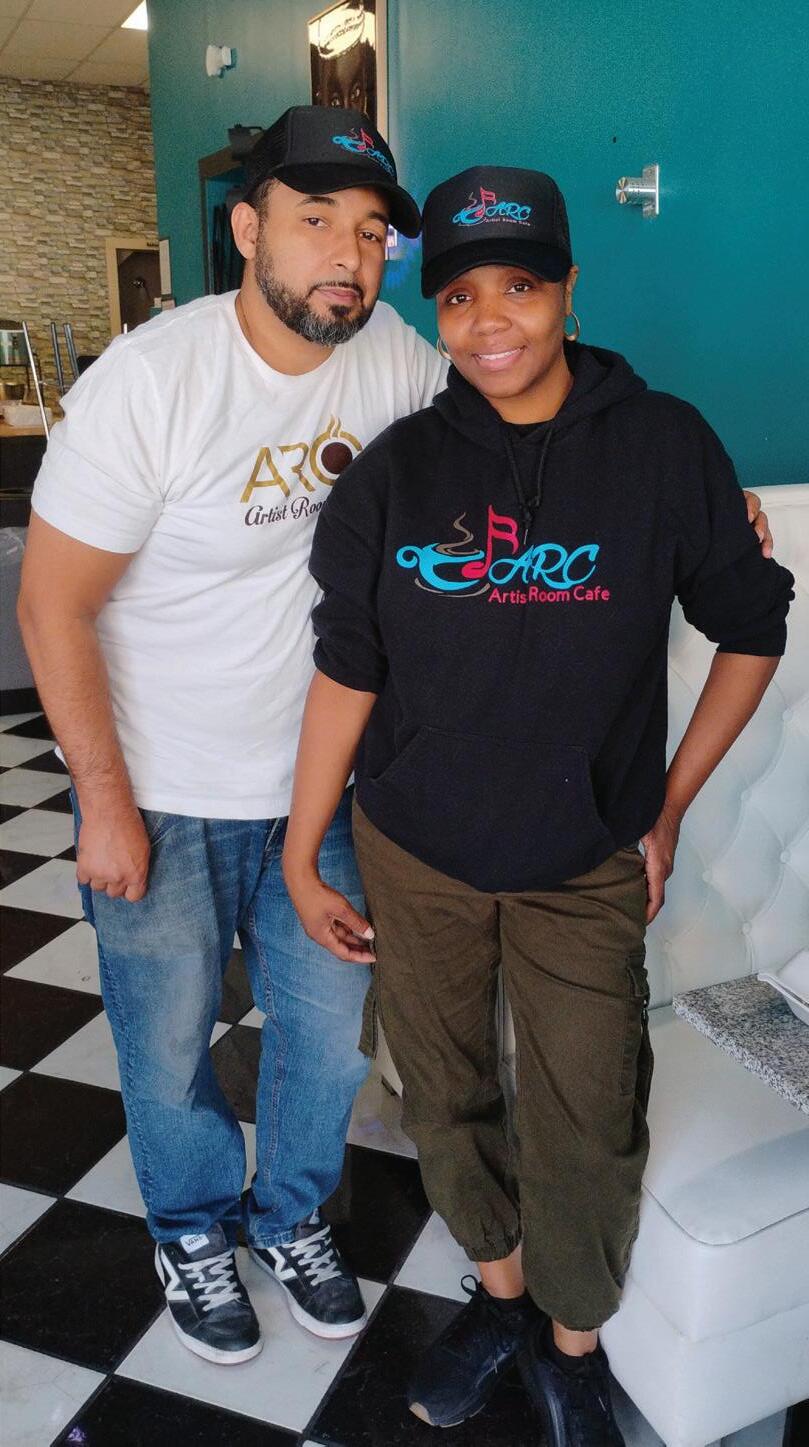

Sponsored Content






St. Angela School has a new fourth grade teacher, Ms. Deja Coleman, St. Angela Class of 2011! Her enthusiasm for her alma mater, and for her young scholars, is palpable when you enter her classroom. “I love it,” she says, “I love being home!”
And everyone at St. Angela loves that she has come home. Principal Whitney McIntosh says she shines in the classroom. “She led the school pep rally to help prepare scholars for our first round of testing and is invested in their success to her very core. I’m excited and grateful that she is here, a part of our team.”
While at St. Angela Deja’s enrollment in an enrichment program at Rush University led to a deep love of science and to the university’s
significant investment in the school’s science lab. When she graduated from Fenwick, Deja entered Northern Illinois University, with a double major in nursing and psychology. With the birth of her daughter, Josie, she needed a less demanding curriculum but still wanted a career in service. Fortunately for St. Angela School, and for so many children, she chose education.
Deja has taught for six years, all at Catholic schools, and has stayed close to many friends from her years in school here. She loves the idea of helping them reconnect with each other and the school alumni community.
“I’m so happy to be here where I belong,” she says, “and my daughter will be in the Class of 2034!”
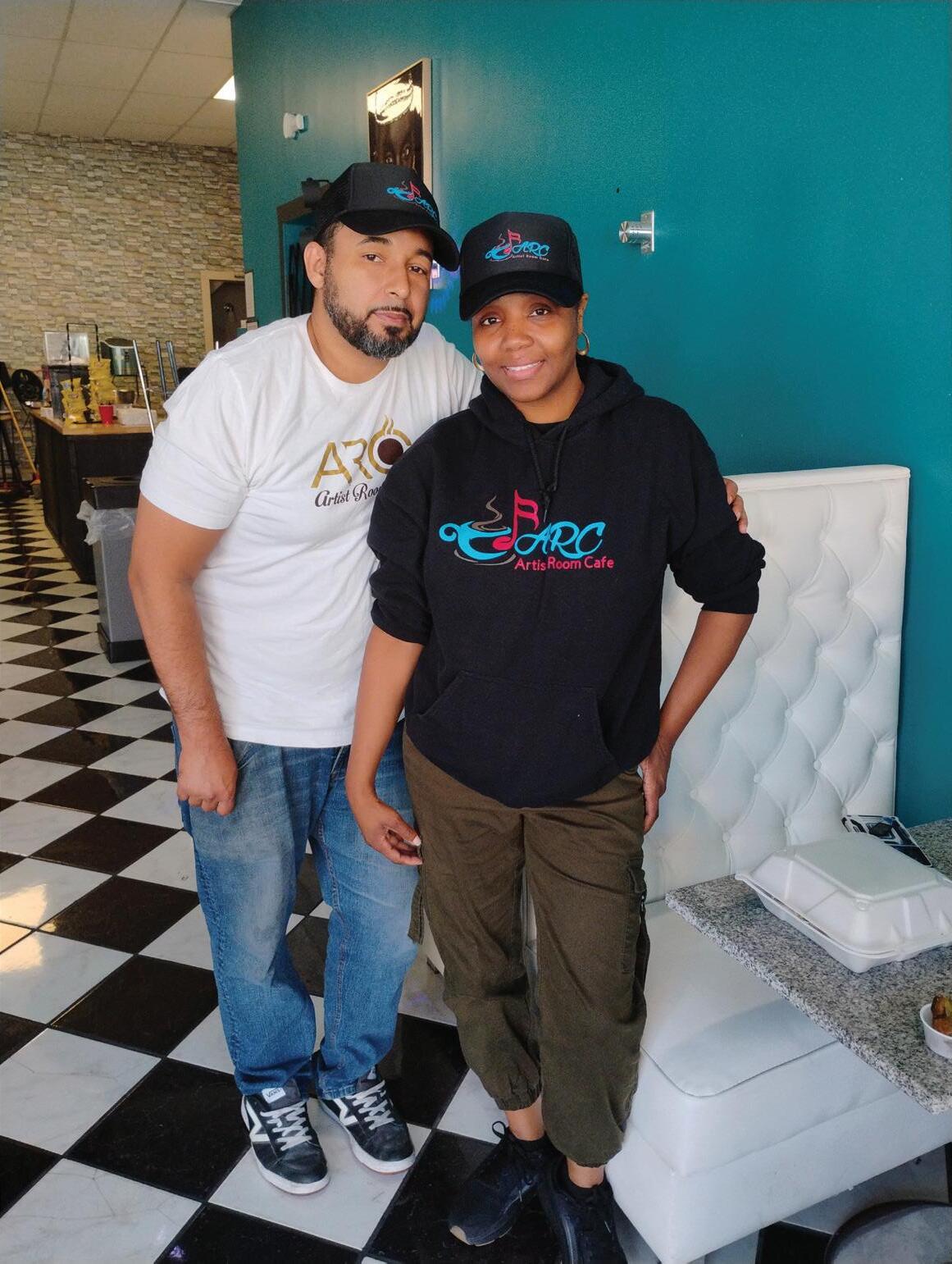
greens and dressing. Everything you imagine for Thanksgiving at home.”
lso, the Mojicas also hold a back-to-school ent where they give away school sups.
“Before COVID we shut down the block on eamington and Madison and held a block y where we had seniors at Columbia ollege design clothes,” William said. “We had actresses and models model the clothes in the middle of the street as we gave away ood and school supplies. This year is number 12 for us so we’re not going anywhere anytime soon.”
help their businesses along, the Mojicas trying to apply for small business ants and set up a meeting with Ald. ason Ervin (28th Ward) to discuss a few things.
he Mojicas plan to do more promotion to
get the word out about their businesses.
“Realistically, our daily customers come from outside the neighborhood by accident,” William said. “People are getting off the expressway and they Google coffee and we come up so that’s how we’re getting a lot of our customers. We get more outside customers than we do local customers at times.”
In addition to the cafe, the Mojicas also run a catering business.
“Our catering is fully customizable,” William explained. “We can create any menu you can think of. I’ve catered for Chicago Bulls College Prep High School. They had a Caribbean style lunch with Puerto Rican rice, Caribbean steak and chicken, fried plantains and salad.”
Soul food catering is also available with the usual items like fried chicken, baked

or fried catfish, baked macaroni and cheese, etc.
For more information about the Artist Room Cafe or catering, call (312) 788-7078
“I’ve also catered for different nonprofits with multiple different trays of sandwiches,” William said. “It just depends on what kind of menu you want. We can create it.”
Beyond their brick-and-mortar businesses, the Mojicas are the driving force behind Mojica Media House, producing independent films, stage plays and other multimedia projects. The couple is currently filming a proof of concept for a vampire television series, “Shadows, Chicago’s Underworld.”
Their mission, they said, is to create spaces and stories that inspire, uplift and connect communities














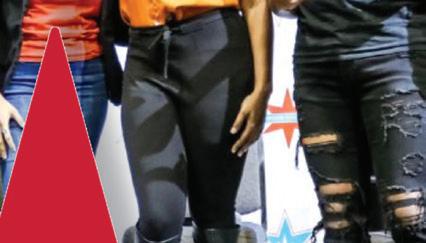









Grab your colored pencils and crayons! Help Cereal Buddy explore several landmarks in the Austin neighborhood!
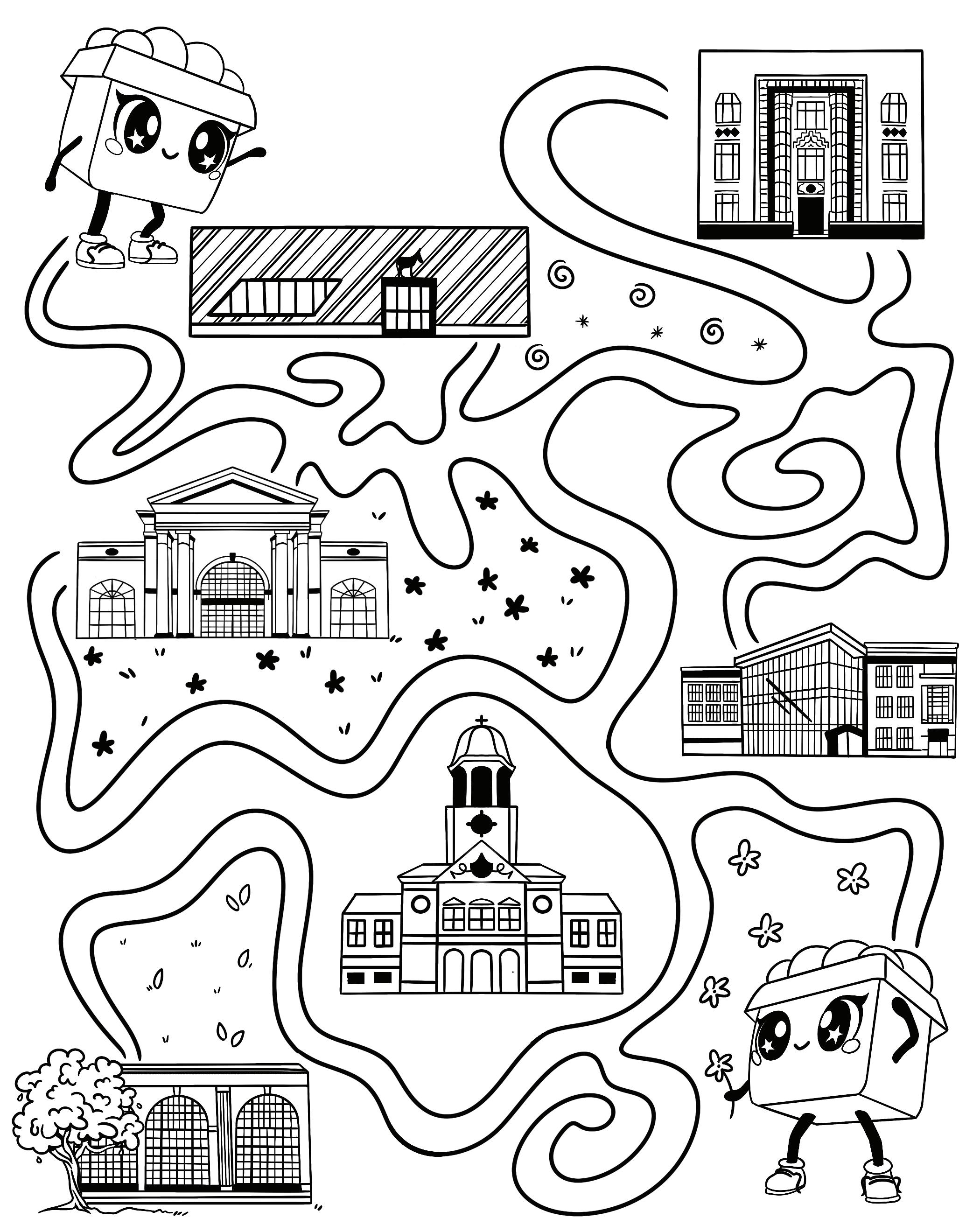



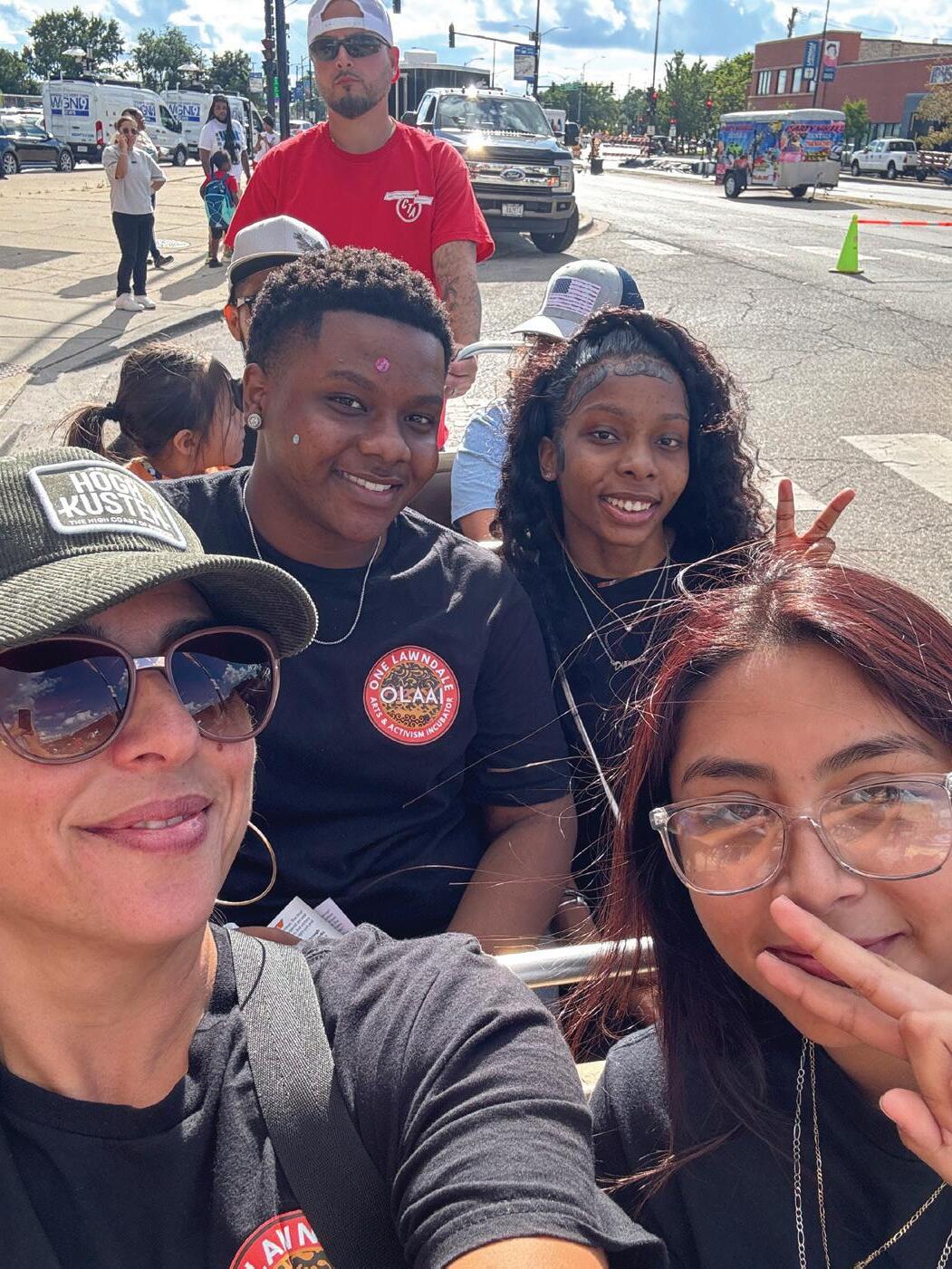

HECTOR CERVANTES Contributing Reporter
October marks National Arts and Humanities Month, a celebration highlighting the impact of the arts on communities across the U.S. It’s a time when individuals and organizations are encouraged to engage in creative activities that inspire reflection, dialogue and social change.
The One Lawndale Arts and Activism Incubator (OLAAI) empowers Black and Brown youth in Chicago’s Lawndale neighborhood by blending art, activism and racial healing through programs like the Artivism Project, Youth Design Squad and healing circles, offering paid opportunities for creative and community-driven work.
Founded in 2021 by Cecily Langford, OLAAI provides a space” where young people can create, reflect and build solidarity while addressing social issues through art and cultural engagement.
Langford served as an assistant principal at Farragut Career Academy before founding OLAAI. The police killing of 13-year-old Adam Toledo in 2021, which deeply affected the school community, was a pivotal moment that led her to leave Farragut and create a new “third space”
for young people focused on art, activism, and healing.
Drawing on more than 20 years in Chicago Public Schools, Langford designed OLAAI to blend art, activism and racial healing, offering programs like the Artivism Project, Youth Design Squad and healing circles.
The incubator pays youth for their creative and activist contributions while fostering unity and solidarity among Black and Brown communities in Lawndale.
For Langford, the killing of Adam Toledo highlighted ongoing struggles with gang violence, racism and tensions between Black and Brown students, pushing her to confront difficult questions about how to foster understanding and address harmful language within the school community.
“In my time at Farragut, I had buried several kids, and we faced constant challenges with lence and racism, where tensions between Black and Brown students often ran high. As a leader, I had to ask myself: how do we address this? How do with the fact that the n-word is used so often in our hallways? I was hearing it every day,” Langford said.
Though Adam was still in middle school at the time, he was on track to eventually attend Farragut. Langford reflected on the importance of conversations about racism and solidarity in schools, describing how Adam’s balloon release became a moment for the community to grieve, remember him and engage in reflection about unity and understanding.
She heard repeatedly that Adam loved to draw and recognized him as an artist, which inspired a shift in her thinking. She realized she needed to create a new way to lead and build a supportive environment for Black and Brown youth in the Lawndale community.
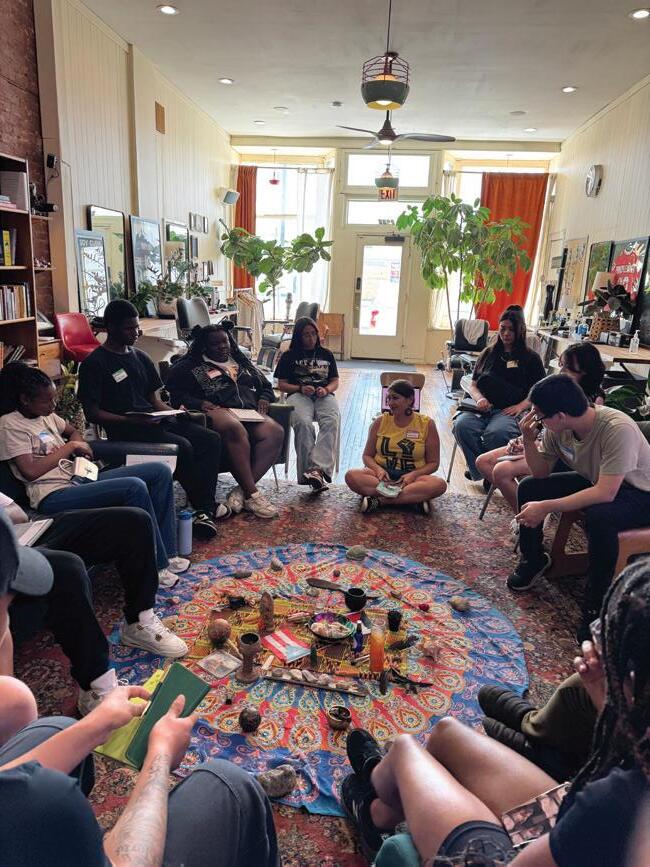
The Youth Design Squad engages young people in “artivism,” lending art and activism through hands-on projects. Participants ollaborated with the Chicago Park District and Resolver Studios
The Chicago Sukkah Design Festival pairs community organizations in Chicago’s North Lawndale neighborhood with diverse architectural designers. Sukkot installation for the Chicago Sukkot Design Festival. Their work will be showcased at the Lawndale pop-up and incorporated into the festival on Oct. 5.
The racial healing component, developed in collaboration with Maraliz Salgado, the author of “F.L.Y. L.I.B.R.E.: A Guide for Healing and Liberation” engaged 12 Black and Brown youth from Lawndale in solidarity circles to explore their experiences of racial trauma in school and their neighborhoods.
“I want to devote myself to a different type of space for young people. I feel like my abolitionist spirit, the belief that we need to dismantle some of these systems and replace them with very different ones, became clear to me. I was ready to take this journey and work with the community I had built relationships with for five years,” Langford said. “So, I did it: I left Farragut with the hope of creating the Lawndale Arts and Activism Incubator in 2021, and since then, it’s been a pathway to where we are now.”
The organization runs several youth-focused programs in Lawndale, including the Artivism Project, Youth Design Squad and racial healing initiatives.
“Our goal is to secure the funding and build the capacity to interweave all three strands and pilots into a cohesive program for the upcoming summer,” Langford said.
The Artivism Project engages youth in participatory action research, combining art and storytelling to document community histories and experiences, culminating in public showcases
Participants reflected on healing and liberation while discussing how to process and respond to systemic inequities. The program incorporated creative practices, including rudimentary instruction in Puerto Rican Bomba music, to honor community members and victims
“We conducted a small honoring and provided basic instruction in Bomba. Neither I nor the other facilitator are experts, but we experimented and trained the young people, who then led their own circle with a different youth group, the Lawndale Children’s Discovery Center Youth Council, during the summer. They applied what they learned from our pilot, were comensated for their work, and guided other outh in reflecting on their racial identities and connecting across differences,” angford said.

angford emphasized the importance of aging young people in Lawndale on ssues like deportation and mass incarceration, encouraging them to channel their gy and wisdom into building solidarity and creative resistance. She believes youth perspectives are crucial, noting that historiyoung people have driven major social hange, and stresses the need to continually elevate and support their voices.
“So, we had the families come, partnered with others, and held one big showcase. The art remained on display, and that concluded the project. This will serve as one of the building blocks we’ll continue to develop and incorporate into upcoming programs,” Langford said.
“How do we continuously join forces, put aside our divisions, the false divisions we’ve learned and really focus this resistance in a place of love and creativity? We need to honor young people’s wisdom, even though they are adolescents, because if we look at history, it’s often young people who have driven the greatest social change. At this moment in history, elevating, supporting, and amplifying youth perspectives is incredibly important to me personally,” Langford said.
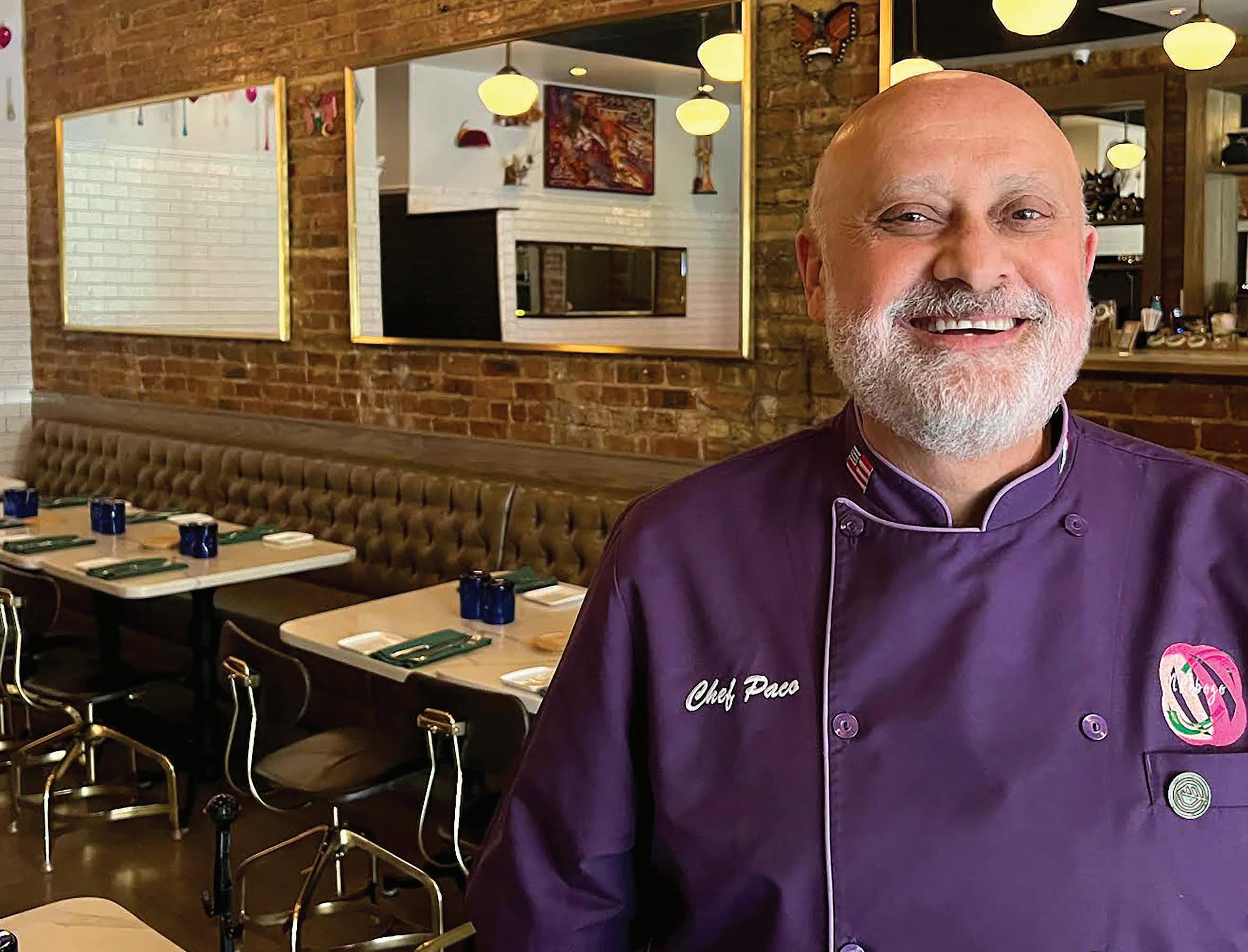
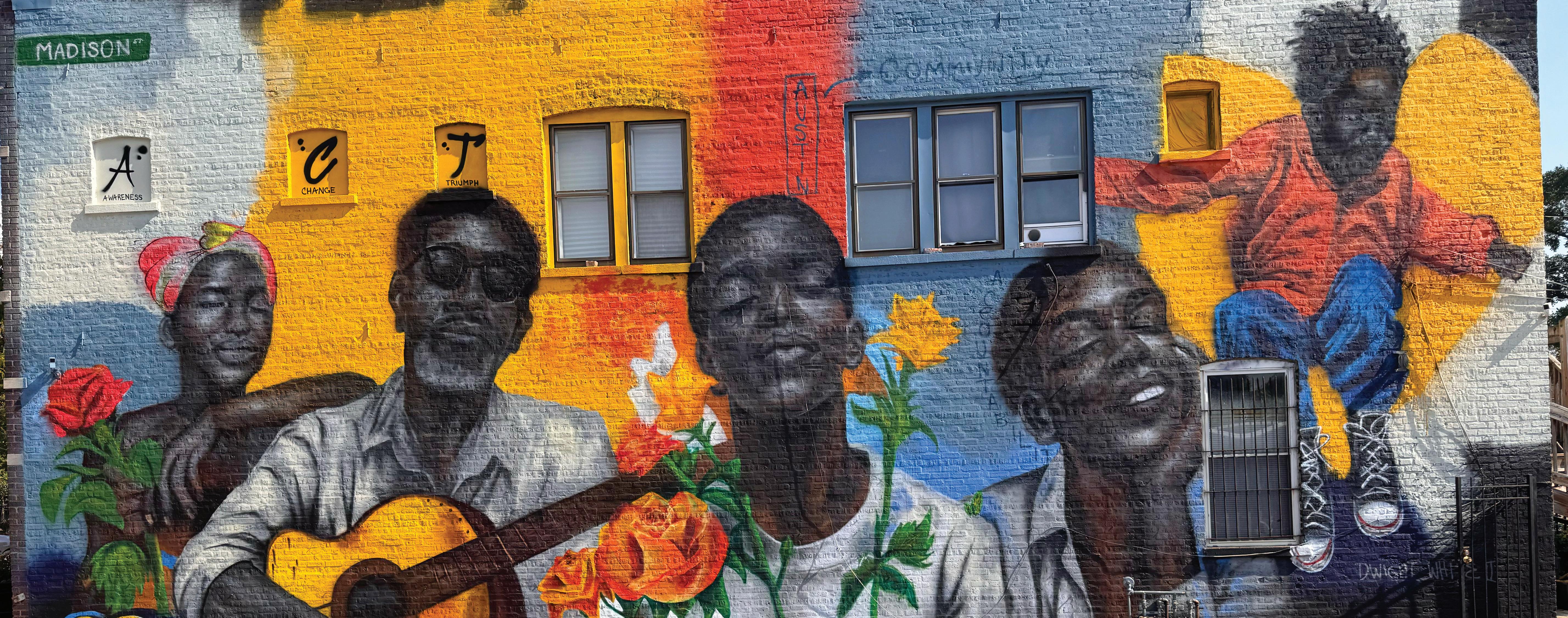
Led by local leaders and artist Dwight White II, the mural reflects residents’ voices gathered through listening sessions
HECTOR CERVANTES
Contributing Repor ter
Antidote Inc. and Taproots Inc. brought the Austin community together to create a transformative mural at A.C.T. Yoga, turning a blank wall into a canvas for healing, storytelling and youth empowerment.
The project is powered by Austin-based leaders including Courtney Gipson of Antidote Inc., Ruby Taylor of Taproots Inc., Alexandra Auguste and Jer maine
Harris of the Community Leadership Fellows, Chris Thomas of YourPassion1st and Mercedes Pickett of Earth’s Remedies, who together bring expertise in restorative justice, intergenerational storytelling, youth leadership, mentorship and holistic community wellness.
Guided by lead artist Dwight White II, the project was shaped by local residents, youth, and stakeholders through community listening sessions, ensuring their voices and experiences were reflected. The initiative combines art, intergenerational
dialogue and restorative practices to foster connection, pride and healing in a neighborhood long impacted by systemic inequities
“Community members added their own personal touch to the wall, giving them the opportunity to create murals that will be here for years to come and to express their creativity,” White said.
Taylor previously collaborated on a community project that brought together block clubs for peace circles and community-
building sessions, where residents shared their visions for their neighborhood. Antidote captured these ideas visually, creating block club signs that reflected the community’s input. When the Together We Heal Creative Place Program opportunity arose, they reunited to collaborate again.
When asked how Taylor had been involved in shaping the project from the beginning, she explained they had previously collaborated on a similar initiative led by the Community Leadership Fellows, including Alexandra Auguste and Jer maine Harris.
“We worked with a group of block clubs to bring community members together to discuss their neighborhood and share what they wanted to see in it. We held a series
of peace circles and community-building sessions where block club leaders, members, and other residents could participate Antidote’s role was to capture the ideas and visions shared, and those images were then portrayed on the signs for each participating block,” Taylor said.
The project ties into ongoing work in youth empowerment by ensuring young people are included in listening sessions and given a voice in shaping their community It emphasizes that youth perspectives matter, highlighting their role in identifying needs and contributing to solutions, while also fostering unity across generations Marshawn Feltus, owner of A.C.T. Yoga was eager to join the project and fully

supported its vision. Through collaboration, he felt excited about the final work, believing it will bring energy and community interest and hoped it would help raise awareness for his business. The yoga studio, the first such facility in Austin, is at 5457 W. Madison St
“Marshawn is the one who allowed us to use the wall for the mural on his building and there’s space out there where people can gather and I hope that it will inspire people to use the safe spaces and the available spaces in the community to come together,” Taylor said.
“When I heard about it, I was ecstatic,” Feltus said. “The mural creates an opportunity to bring more exposure. Now that






the mural and the lot adjacent to the building, we’ll be to host more outdoor events as the weather permits. That will definitely bring more attention to both the business and the
sessions, weather permitting, will take place near the mural, using it either as a backdrop or a central feature ccording to Feltus. The mural is expected to be a dding visual interest to the activities.
meriCorps VISTA with Territory, moved to an and is focused on building community ams and improving efficiency. He’s involved in local projonnect with the Austin neighborhood and create shared experiences through art.

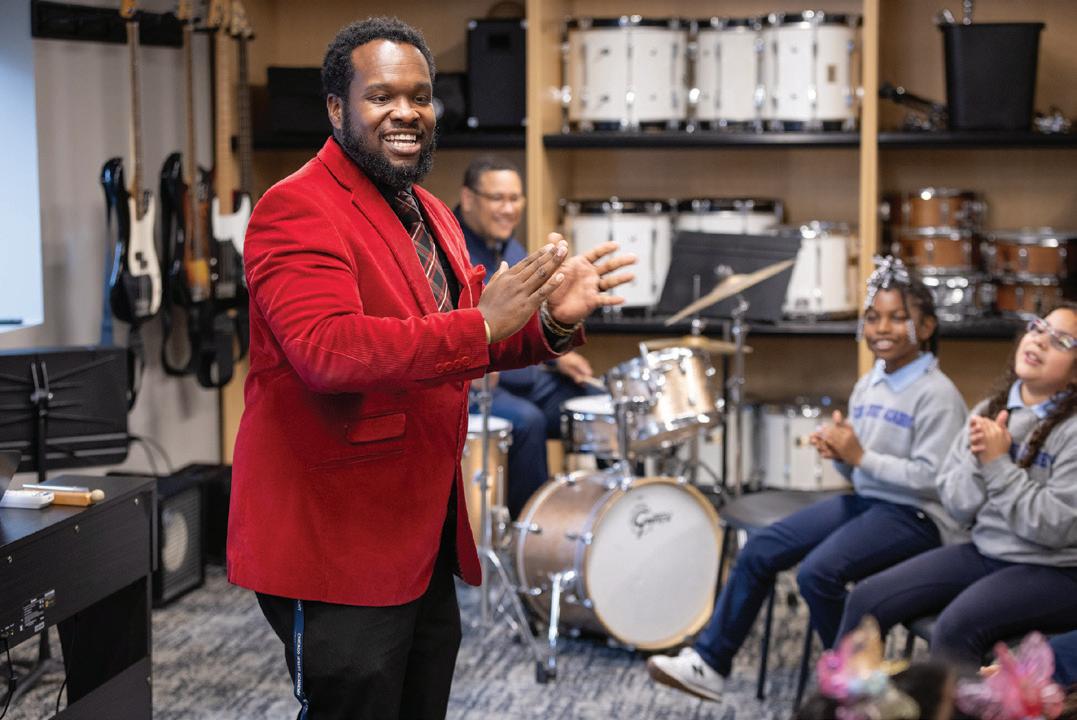

“I hope the mural provides something nice to look at every day. I would say it’s a community bonding experience, where people come together and enjoy art. It’s absolutely beautiful and another ed by everybody,” Poon said.
White was drawn to the project because he’s been creating for several years and sees it as part of the eautification. The “Together We Heal” theme aligns with his personal mission of fostering healing in the lacing it on a West Side yoga studio made it a pportunity for him.
ould hope that this is something that won’t stop. Just because ome to an end, but that people will continue to to having such projects and making it an ongoing
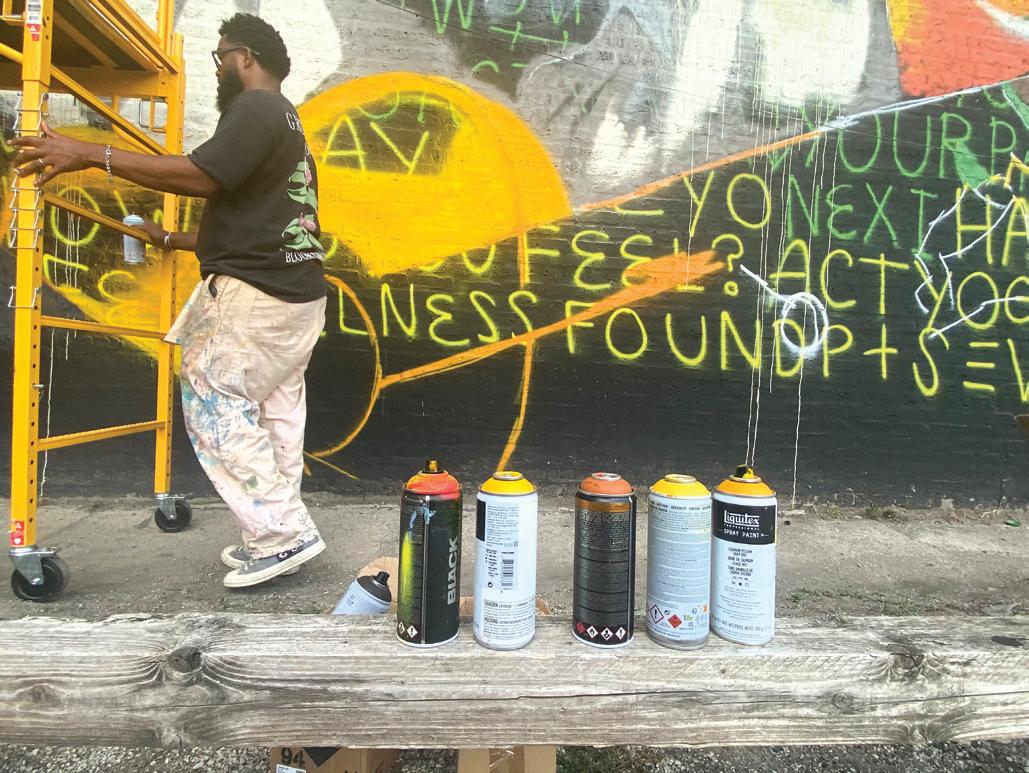
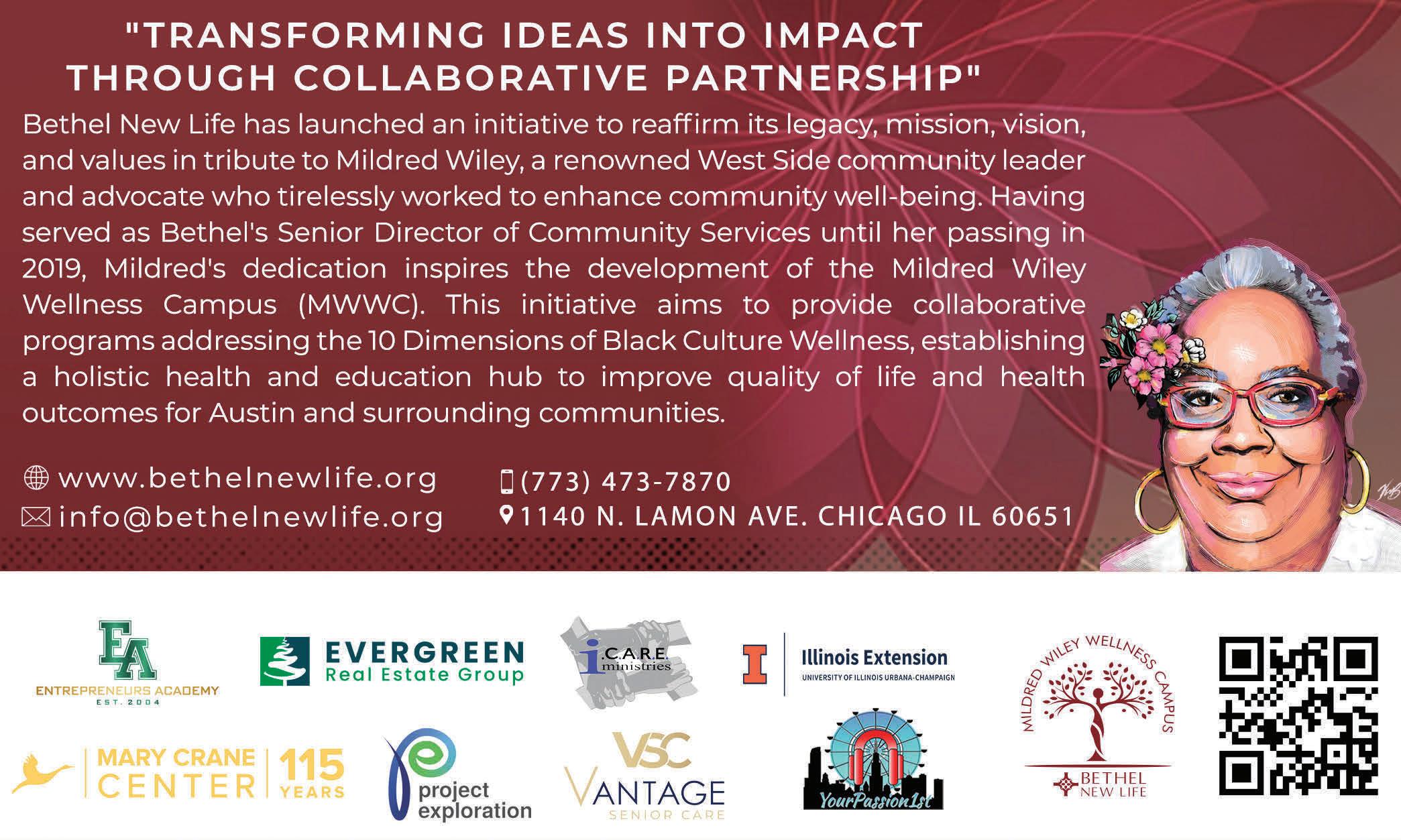







reflects on his life in public service and how he got there

ADEBORAH BAYLISS
Contributing Repor ter
s an eight-year-old son of a sharecropper in 1949 who spent his days picking and chopping cotton in the sweltering fields of Parkdale, Arkansas, Danny K. Davis could never have foreseen he would become a noted




First elected to Congress in 1996, Davis has spent 46 years in elected offices


African-American member of the U.S. House of Representatives with a tenure spanning decades.
Davis, a Democrat who currently represents Illinois’ 7th Congressional District that includes parts of Cook County, this summer announced his retirement from public office. He will trade Capitol Hill for quiet mornings and peaceful




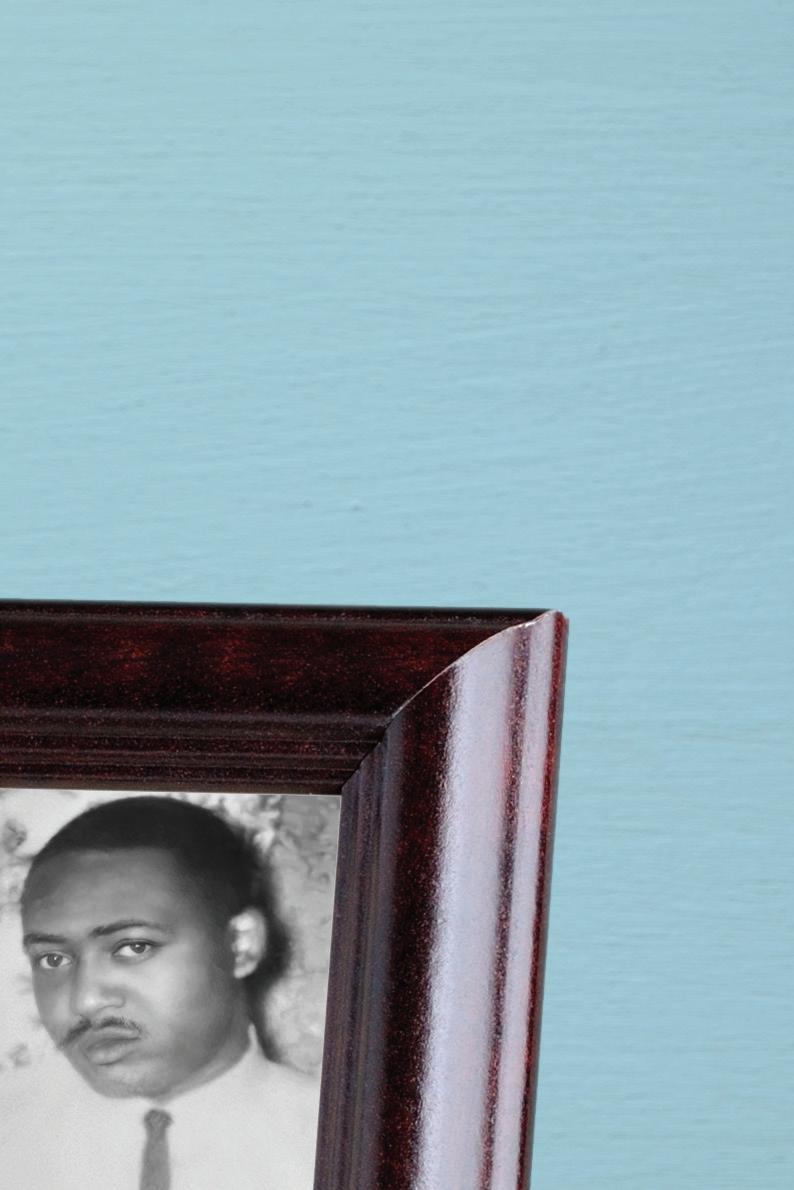



evenings chatting with wife Vera


G. Davis
At the end of next year, Davis will have been in public office for 46 years including the 11 years he served on the Chicago City Council as an alderman prior to serving in Congress.



“Parkdale was real rural but the people were wonderful,” he said. “The average family size was five or six. In my family there were nine of us children. In our church we had about 10 families. When you added all the children in, there would be about 100 people at church on a Sunday.”
He said he always has seen his primary responsibility to be to help lift the lives of those that have been stuck at the bottom.
“That’s been my focus but not to the neglect of any other segment of society,” he said. “I just feel good when I see the desolate person uplifted. When I see a kid go to college who wouldn’t have been able to go unless they got some help which is what we did with my scholarship fund.”


Despite working hard on the farm, chopping and picking cotton and all the other labor that was necessary, along with the hardships Black families faced during those times, Davis describes his childhood as “pretty cool.”

Reflecting on where it all started, Davis, born in 1941, credits his parents, his teachers and his church, for bestowing upon him the foundation necessary to reach the highest plateaus this country offers
“We lived on a farm and my parents were sharecroppers,” Davis said in his distinguished baritone, echoing the cadence of Frederick Douglass, who was born into slavery, later a free man, abolitionist, orator, writer, and statesman who played a crucial role in the fight against slavery.

“There were always chores, including milking a cow,” he said. “You learned to do it all and generally started when you were eight or nine years old. You talk about child labor…We’d actually do what you would call a full day’s work and you only went to school about five months out of the year.”




He added: “I had two wonderful parents. My dad finished the fourth grade when he was 19 years old. My mother finished the eighth grade. Where we lived, they didn’t always have a school and they certainly did not have a high school.”
Young Blacks who were of high school age had to go to another town to continue their education, Davis explained





From the middle of July until the middle of August was referred to as the “lay by season,” meaning there was no work to be done because the crops had all been planted and cultivated. Davis explained.
The congressman moved to Chicago in 1961, after earning a Bachelor of Arts degree from Arkansas A.M. & N. College at 19. He subsequently earned both Master’s and Doctorate degrees respectively from Chicago State University and the Union Institute in Cincinnati, Ohio.



the North Lawndale community. There were just eons of people. I mean Black people were leaving the South, trying to get away from racism and there were plenty of jobs so people came.”
Things were also changing in terms of technology so work on the far ms was decreasing. The previous manpower or womanpower needed to work a farm was no longer as necessary due to farm machinery becoming more proficient.

Davis has never lived in any other area in Chicago except the West Side


“When I got here, I had two sisters who lived here so of course my first stop was living with them,” he said. “Quite honestly, I fell in love with the West Side and decided as I sized things up, that this was where I was going to live and where I was going to try and be helpful.”

“I was part of what you would call that last big migration wave that came from the rural South,” Davis explained. “Chicago was ‘poppin’” in the neighborhood I came to live in which was

Davis had not set his sights on Congress at that point but knew he wanted to be publicly engaged.


After working a short while for the postal service, Davis began a teaching career in the Chicago Public School system in No rth Lawndale at age 20, something he said he always knew he would do
“This was during the Civil Rights Movement,” he said. “I went to meetings and listened to (Rev.) Dr. (Martin Luther) King and all of those things,” Davis said. “That was my motivation to do public work I was teaching G.E.D. classes at one of the Urban Progress Centers when I met Ms. Rosemarie Love who was chairman






FAR LEFT: CONGRESSMAN
DANNY DAVIS WITH STATE REPRESENTATIVE LASHAWN FORD AND CONGRESSMAN
DAVIS’S WIFE VERA (AT RIGHT) | TODD BANNOR
LEFT: CONGRESSMAN
DANNY DAVIS OFFICIAL PICTURE | FILE PHOTO



of the personnel committee for the Greater Lawndale Conservation Commission.”
Love convinced Davis to leave his “good” teaching job to work for the Conservation Commission, his entry into public involvement. From there, it was a continuation of working for one agency or another.

in public life. “So, if they’re going to give you that kind of responsibility, then you got to try and live up to it.”

they are following the constitution of the United States.”


As an alderman during the Harold Washington era, Davis was known as an independent who was not part of the “political machine” that was still the dominant force in Chicago politics, he said.

Davis responded to the Trump administration’s efforts in turning back civil rights and other gains made over the years,

In order to get back on track, Davis said it is time to change leadership.
“If we don’t change leadership, we don’t change our direction, so there’s no other way,” the congressman stressed. “I’m amazed at the number of people who did not vote in the last election so, everywhere I go, I’m saying vote
Josie Ware, Davis’s scheduler and office manager, has worked with him for years.

Davis was elected to the Cook County Board where he remained for six years and was elected to Congress in 1996 and started his service in 1997.
“At the end of next year, I will have spent 30 years as a member of the House of Representatives,” he said.

“You’re asking people to put their faith and trust in you to represent them and their positions on things.” Davis said of his role




“The road has been rugged,” he said. “We made progress during the reconstruction period where we elected African Americans to public office, even two Black Senators from Mississippi. Then all of those individuals were put out. There were efforts to make them look bad and redistricting. These are the things that the Trump administration is doing now.”
He added: “The only thing I can figure out about the Trump administration is that they must be checked! They must be fought and we have to say ‘we’re not going back.’
The courts in some instances have been complicit. It seems to me that some of them are following the Trump law more than

“I am proud to have known Rep. Danny K. Davis for at least 40 years, if not more,” Ware said. “He has served in several elected gover nment positions and has proven to be a trailblazer throughout his public service career, who always put the interest of the people he represents first.”
Davis has two sons, Jonathan and Stacey (deceased), and is a member and Deacon of the New Galilee M.B. Church



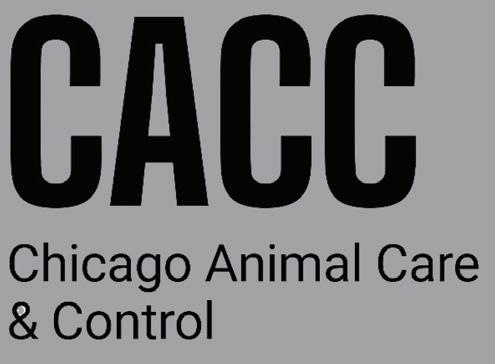

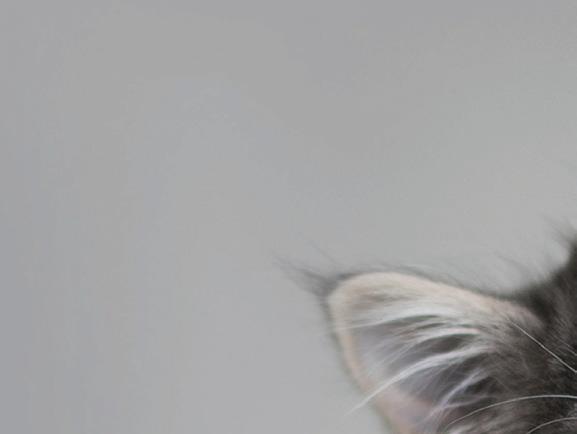



CACC is looking for Community Liaisons to help with outdoor cats, reunite lost pets, share information and spread awareness.
Scan to learn more.
Priority zip codes: 60644, 60651, 60628, 60623, 60629, 60609.







Rep. Danny Davis’s chief of staff focuses on barriers for Black women in the justice system
Contributing Reporter
In her job as chief of staff to the area’s congressman, Tumia Romero has learned much about the criminal justice system. Still, as she threw herself into research on incarceration for her job and her doctorate, she was shocked to learn the statistics on Black women and prison.
“As I continued to work on that issue, I learned that the incarceration rate for women in the United States had increased by 700% over 10 years,” said Romero, the top aide to Rep. Danny Davis, who represents Illinois 7th Congressional District. “Then I found out that African-American females were disproportionately impacted by that number.”
At that point, she said, “My focus became more strategic.”
By then Romero was already pursuing a doctorate that focused on post incarceration reentry and was one of the architects of the Second Chance Act, which looks at opportunities after leaving prison.
Now a 2025 graduate of Antioch University’s Ph.D. Program in Leadership and Change with a focus on public policy and social change, she has led groundbreaking research published this year examining the impact of the Second Chance Act on African American women’s reentry.
Through her work for Davis, Romero is a key player in shaping federal policy, especially in the areas of prisoner reentry and social justice. Her research has been groundbreaking in highlighting the disproportionate impact incarceration has on African-American females, making significant contributions to understanding
and improving reentry outcomes for this underserved population.
She intends to use her dissertation research in future writings
“Right now, I’m working for a member of Congress who does not shy away from tough issues like prisoner re-entry,” she said. “This position often gives me a platform to weigh in on federal public policy and to inform decisions. Last year, we created a congressional re-entry caucus to take a deep dive into this important issue.” Romero said.
She hopes her research will spark federal policy discussions, focusing especially on African-American females
Romero was surprised to learn that approximately two million women are released from prisons and jails each year in the U.S. While conversations about reentry often focus broadly on the overall population, she found it striking how dramatically the number of incarcerated women has increased
“Of course, I learned that there was very little peer-reviewed information about African American females in reentry. That’s what makes my work somewhat landmark and historical because it really does a deep dive into African American females in reentry and some of the causes behind it. Of course, recommending change is where we focus, on legislation and policy at the federal level,” Romero said.
Romero wants African American females to know that there are people out there who care about them, care about where they are, and want to help them.
“I did not grow up with a silver spoon in my mouth. I grew up as an African American female who had a baby and was trying to make it in life. If I had not had the opportunities provided by people like Harold Washington, Danny Davis, and
other mentors like Avis Lavelle, I would not be where I am today, along with my mother, of course, and my family,” Romero said.
Romeo began her political career by volunteering.
“I eventually got involved in politics starting at age 16. I began by volunteering for the Harold Washington for Mayor campaign, and later for Luis Gutierrez’s campaign when he was running for alderman of the 26th Ward,” Romero said.
She briefly worked for Gutierrez before being hired by then Mayor Washington’s press office. The job demanded more than 40 hours a week, which delayed her college education. Over the years, she also served under other mayors. After years of juggling work and school, she committed to completing her education and earned her bachelor’s degree in communications from Loyola University in 1997. Romero also earned her master’s degree in organizational management from the University of Phoenix while working with Davis
When Davis hired her in 1998 to work on his staff, she decided that she couldn’t truly represent the people without first understanding them. So, she moved to the West Side.
“I’ve been an Austin resident since 2002. I grew up on the South Side of Chicago for my elementary years. I grew up on the west side of Chicago for my high school years. I used to commute to Hyde Park Career Academy every day, five days a week,” Romero said.
She added: “I did not grow up with a silver spoon in my mouth. I grew up as an African American female who had a baby and was trying to make it in life. If I had not had the opportunities provided by people like Harold Washington, Danny Davis, and other mentors like Avis Lavelle, I would not be where I am today, along with my mother, of course, and my family.”
LARAMIE STATE BANK REDEVELOPMENT PROJECT COMING SPRING 2026!
AN


Athena Williams, Executive Director Oak Park Regional Housing Center
LARAMIE STATE BANK REDEVELOPMENT PROJECT:

5200 -5226 W. Chicago Avenue
78 New Construction rental units
Fitness room
On-site laundry facilities
Community meeting room
Resident event room
Rooftop with city view
Restoration of a Historic Landmark
OTHER SERVICES:
Rental Counseling
Apartment Referrals
Housing Provider support
Homebuyer and Homeowner support
Housing policy presentations
Industry Partner Referral Program
Land acquisition and development
ADMINISTRATIVE OFFICE
1041 SOUTH BOULEVARD, OAK PARK, 60302
708-848-7150
INFO@OPRHC.ORG
PROGRAM OFFICE
WEST COOK HOMEOWNERSHIP PROGRAM
5934 W. LAKE ST., CHICAGO, 60644
773-887-5187
INFO@WESTCOOKHOMEOWNERSHIP.ORG




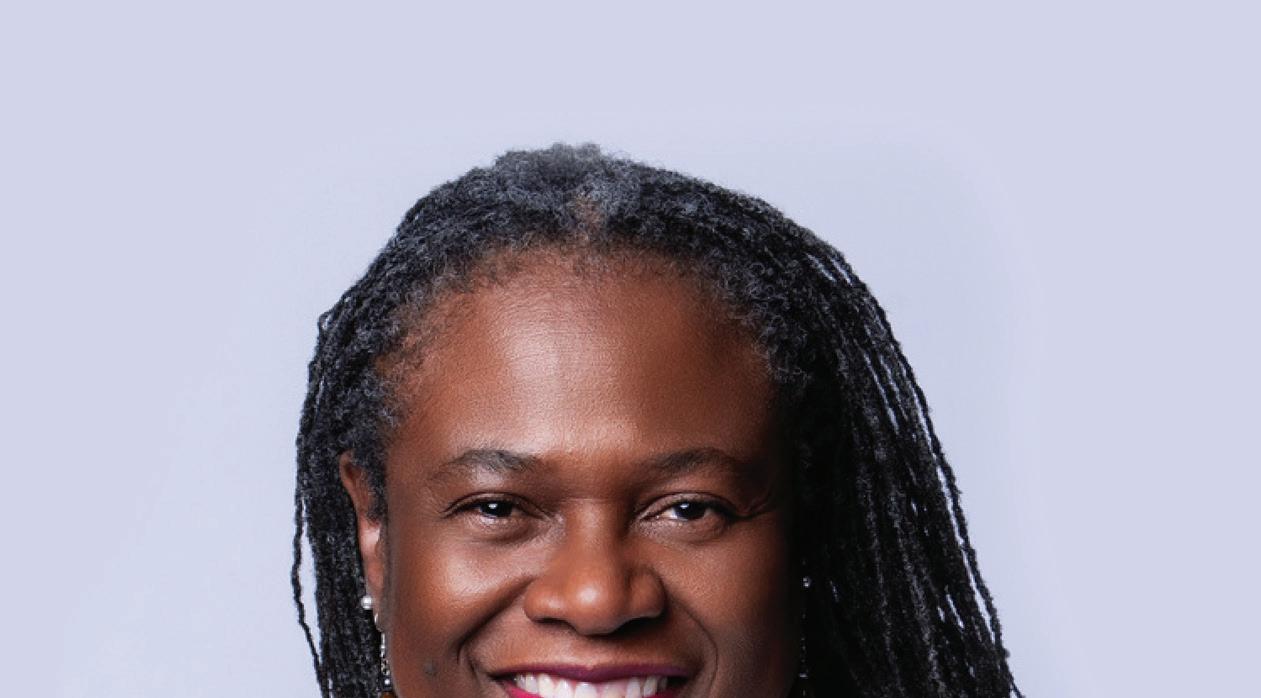














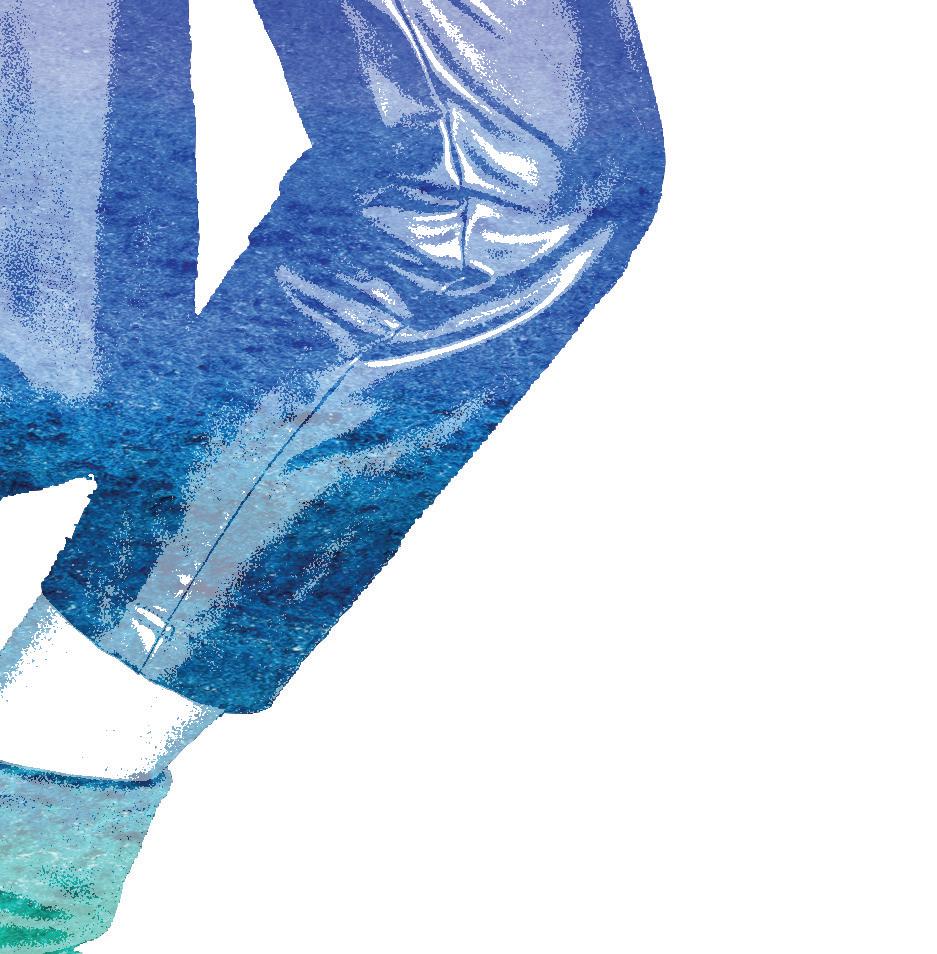

HECTOR CERVANTES
Contributing Reporter
TaskForce Prevention and Community Services, Chicago’s oldest Black-led LGBTQ+ organization, celebrated its 35th anniversary this year with its annual fundraiser Vogue for Good.
The event was held at the Columbus Park Refectory on Oct. 9, honoring ballroom culture and raising support for the organization’s free health, wellness and leadership programs for LGBTQ+ youth on the city’s West Side.
TaskForce led the 2025 Chicago Pride Parade as the Out Front Leader, marking the first time a local community organization took the lead. The organization centered its LGBTQ+ youth of color during the parade, highlighting their creativity, resilience and joy, including through voguing (dance) and other for ms of







self-expression.
Dr. Christopher V. Balthazar, who is executive director of TaskForce Prevention and Community Services, said the event celebrates the past, while recognizing the ongoing commitment and impact of TaskForce as well as challenges ahead.
“It is not an easy feat that TaskForce still exists today and we want to be open about celebrating that. We are acknowledging our history and also recognizing the important and influential TaskForce supporters who helped the organization through various challenging periods in its 35-year history,” Balthazar said.
Balthazar hoped that attendees of resilience and commitment of wants them to experience the s solidarity that ensures LGBTQ+ valued, heard and treated with dignity and He also acknowledged current c ing that community backing is organization’s ongoing resilienc and impact. Ballroom is often described as a space of resilience, creativity and joy.



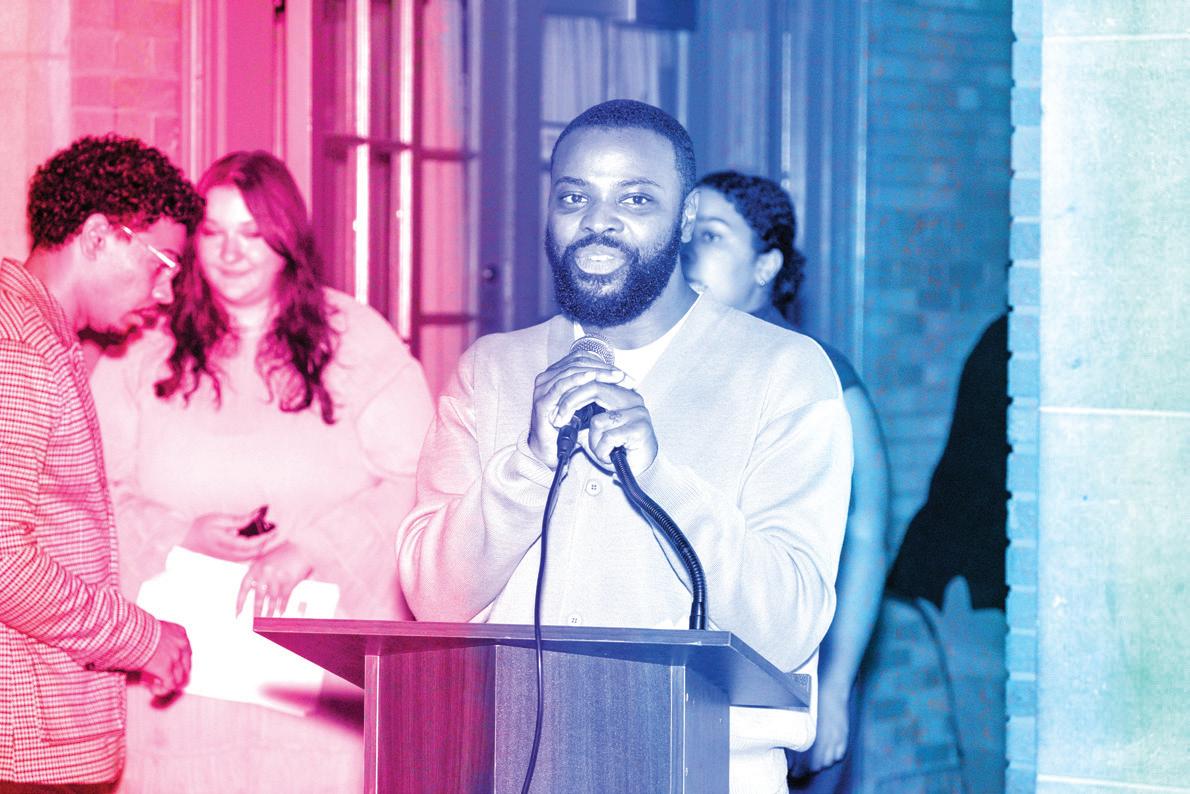
reflected in the youth and communities, Balthazar said resilience is reflected by the fact that they are still here despite all of the current challenges.
“Given the current times, our young people are still here and continue to find ways to experience joy while remaining realistic about the challenges they face and participating in advocacy work This, I believe, is a direct reflection of resilience. As they find joy within TaskForce, they are not just voguing but also using art in creative ways to uplift their voices,” Balthazar said.





“Just like TaskForce, the house and ball community has been a space LGBTQ+ youth of color can be seen, ha their identities affirmed and rece Balthazar said. “There have been and to be, times when young LGBTQ+ kicked out of their homes because of tity. In the house and ball scene, gay mothers and fathers often step up to provide guidance and sup port to these young people,”
When asked how ballroom c
s of Vogue for Good felt the love, f the community. He spirit of support and Q+ youth are seen, and respect. challenges, stresscentral to the ence ftenuse and pace where have ceive support,” en continue e GBTQ+ people are cause theiridene, gay and and supculture values are


Balthazar noted that TaskForce has faced challenging situations in the past and is now relying on the community to help navigate rr rising in the political landscap
in past is now on commu the current challenges, including those ari landscape.
e are li people with trans experiences are being el. Many of their rights are c hether they can access ender-affirming and healthcare systems. There are hallenges.” Balthazar said.



“We are living at a time where, specifically,pe riences attacked on every level. Ma being challenged, even to the point of whe ge g nder-affirming care and healthcare just so many challenges.” Balthaz
TaskForce advocates for ness of comm elected offic suppor ty vo the atta

for the health and wellness of the ommunity, working with elected officials to secure policy rt, amplify communivoices and advocate on their behalf amid direct ttacks.






The involvement of young people in sh collaborating with the team highligh resilience and ability to find joy thr to Balthazar.
he in eople in sharing their ideas and ollaborating with the team highlights the community’s bility to find joy through artistic expression, according to Balthazar

TaskForce plans to better accommodate the individuals suppo has also required an
lans to expand its physical space to ccommodate the growing number of individuals it supports each year, which an increase in staff.
“We now need adequate space to continue focused on that initia-
“We now need adequ this work. We will be f





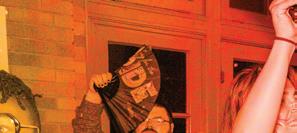







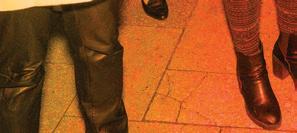
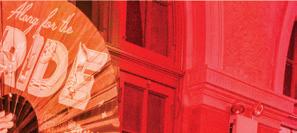

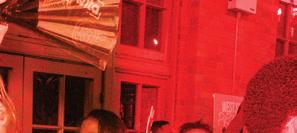




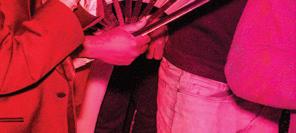


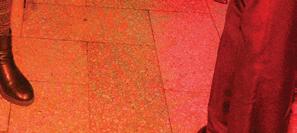
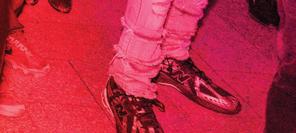
tive. Additionally, we will continue finding ways to listen to our community and ensure that our work is co-led and well-infor med by its members. This approach is central to our identity as an organization, and we plan to continue this work even more deeply and in increasingly meaningful ways,” Balthazar said.
Success, he said, is seen through the lens of ensuring every LGBTQ+ young person has opportunities to flourish, and TaskForce will continue its efforts until this vision becomes a reality.
“As a Black-led LGBTQ+ organization, we recognize that there are challenges to funding. Galvanizing our community to help us thrive, and continue to thrive during times like these, is both important and central to our mission,” Balthazar said. “We really want to be open about celebrating. We are acknowledging our history and we are also recognizing the important and influential TaskForce supporters who helped the organization through various challenging periods in its 35-year history.”











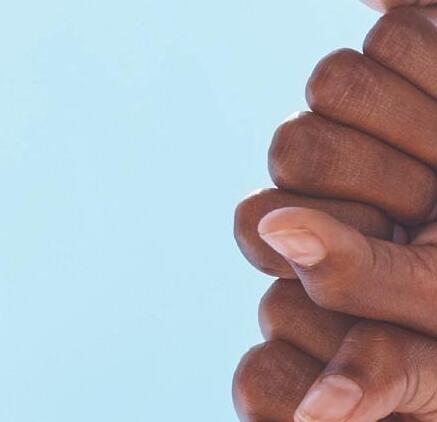















DEBORAH BAYLISS Contributing Reporter
Judge Patricia S. Spratt of the Circuit Court of Cook County splits her time between the Fourth Municipal District in Maywood and the North Lawndale Restorative Justice Community Court (RJCC) program for nonviolent offenders.
On Thursdays you’ll find her at UCAN where the restorative justice proceedings take place with nonviolent participants from ages 16 to 26. These are young people referred to her from criminal court for an opportunity to change their path for the better
The program’s aim is to end the harmful cycle of revenge and recidivism by resolving conflicts through restorative conferences and peace circles with participants, victims, family members, friends and others affected by the crime.
“Judge (Colleen) Sheehan had been doing
(peace) circles at the juvenile court for a while,” said Spratt who took over the North Lawndale proceeding from Sheehan. “They surprisingly had a lot of success. So, as I understand it, she went to Chief Judge Timothy Evans (Circuit Court of County) and asked to start RJCC.”
Spearheaded by Sheehan, the first Restorative Justice Community Court in Cook County, started in 2017 in North Lawndale. Two more courts opened in Avondale on the Northwest Side and Englewood on the South Side in 2020. A new location in Sauk Village opened in July 2024.
The program includes a group of about 30 nonprofit organizations including UCAN which provides wraparound services to par ticipants who come through the program.
“They had success from the start and two years later in 2019 Judge Sheehan retired
from the bench,” Spratt said. “I pestered her so much asking her to show me what to do because I wanted to get to Judge Evans to open up more of these courts in Cook County. He knew my interest and asked me if I wanted to take over. So, in 2019, I became the RJCC judge in North Lawndale.”
Stakeholders like the State’s Attorney office play an important role in the process
“The deal was they would look for individuals coming through the criminal court who met the criteria for North Lawndale RJCC which was individuals have to live, work or worship in North Lawndale and be between the ages of 18 and 26,” said Spratt.
Participants also have to be willing to take accountability for the conduct that brought them to the attention of the arresting police office.
“Once they’re referred to us from criminal court, they can choose to stay with us or
they can choose to go back to criminal court. When I see them for the first time they look to be wrapped up in layers and layers of emotional body armor.”
Rather than defendants, those in the program are referred to as participants.
“They have case managers that I tell them are their guardian angels and they have two circle keepers,” Spratt said. “It’s in the circle where the magic happens and where they learn to trust the people they’re working with and the people they have in the circle with them.”
Family members can join them in the peace circle if the participant requests it. Peace circles are held in a room behind closed doors while talk circles take place in a room open to anyone.
“I don’t get to sit in (the peace) circle with them but I’m told once they shed that body armor they show their authentic self and that’s really just some young kid who has no opportunities because they live in these horribly traumatized neighborhoods and who just needed to make a living. We just want them to do it in a non-criminal way.”
Fredrick Dennis works as a circle keeper with the Lawndale Christian Legal Center and holds a talk circle at UCAN every Thursday, rating them a 10 out of 10.
“Talk circles and peace circles are sacred spaces,” Dennis said. “What’s said in the circle, stays in the circle.”
It’s rare to have parents show up with their child so feedback from parents is rare, said Spratt.
“The grandmothers are the backbone of that neighborhood,” Spratt said. “They should be celebrated. When parents do show up it’s probably for the first time they’re in front of me and they want to get a handle on what their child is going to go through but they don’t really speak.”
An estimated 7.8 million children in the U.S. are being raised in so-called “grandfamilies,” with Black children being disproportionately represented in that scenario. While they make up 14% of the national population, they account for 25% of all children in grandfamilies, a trend exacerbated by various social issues
Once participants are dismissed by the State’s Attorney they have no further

obligation to the court after that and can have their arrest record expunged through Spratt who signs the order of expungement and can take part in the graduation held each year in November.
“Their response to how the program has impacted them is they’re grateful to have had the opportunity to come through RJCC and leave the criminal court and find a path that doesn’t require them to engage in criminal conduct,” Spratt said.
Repeat offenders are not frequent but RJCC participants sometimes will catch a second nonviolent case
“I want to boast that we have a 13% recidivism rate as opposed to Cook County’s general 65%,” Spratt said. “So, when the young people come to the court and when they engage and do what they need to do to come out successfully, they stay successful. We return them back to the community and many of them stay in the community and contribute to the welfare of the community.”
The program she said saves lives.
“I mean you take a person who is living in a traumatized community and throughout his entire life has heard gunshots practically every day and maybe was shot himself or certainly has seen a gun pointed at him. … so it’s people who don’t have hope and don’t have jobs available to them and don’t have the will to get an education, this changes all of that.”
Spratt’s of the belief that opening RJCCs in all 77 Chicago neighborhoods will see a reduction in crime.
“When that happens, businesses come back to the neighborhoods and when businesses come back to the neighborhoods,
people have jobs,” she said. “When they have jobs, they have money that they’ve earned legally and their community is less traumatized.
One of the partner agencies, Austin-based BUILD offers wraparound services to participants.
The organization’s Bradly Johnson, interim executive director and for mer chief community officer, lauded Spratt for helping BUILD develop the necessary relationships to become a place for referral services for RJCC participants who live in the Austin area.
“The North Lawndale RJCC takes in individuals from Austin and other places to make sure they receive services within their neighborhood or the closest to them because they’re most likely to take advantage of it,” Johnson said. “The courts have case managers attached and that’s where BUILD comes in. Specifically for the Restorative Justice team, their case managers look for resources that would support the needs of the individual.”
Sometimes good people do bad things but that doesn’t excuse the harm caused, Johnson said. So requiring participants to work with a restorative justice practitioner to develop a repair of harm agreement (ROHA) makes clear they understand the harm they caused and what work needs to be done to repair the harm is a key part of the process.
“They look at what needs to be changed for them so they don’t continue to make the same wrong decisions,” Johnson said. “Many times there are some mandates about going to school, employment, getting mental health services and treatment. Those are built in and there’s a timeframe attached to it. Typically, it’s like a 90-day timeframe.”
Does RJCC make a difference?
“It definitely makes a difference from my perspective,” Johnson said. “What I would say is the difference that it makes is it actually gives the individual a new identity of purpose and meaning. Oftentimes they don’t consider their value and that they really do matter. I think the process gives them back value and a different label and the power to insert themselves into society and community in a positive way.”
lin Fane, Agent
Marion Street Fl G Park, IL 60302
08-383-3163 www.colinfane.com
Monday & Friday 9am-5pm s/Wed/Thurs 9am-7pm ay 9am-12pm

Larry Williams, CPCU, CLU, ChFC, CASL 5932 W. Lake St., Chicago, IL 60644
Bus: 773-379-9009
Fax: 773-379-0323
www.larrycarwilliams larry.williams.b0bk@statefarm.com.com
























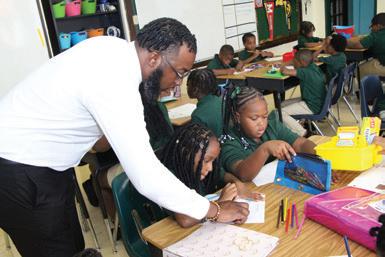







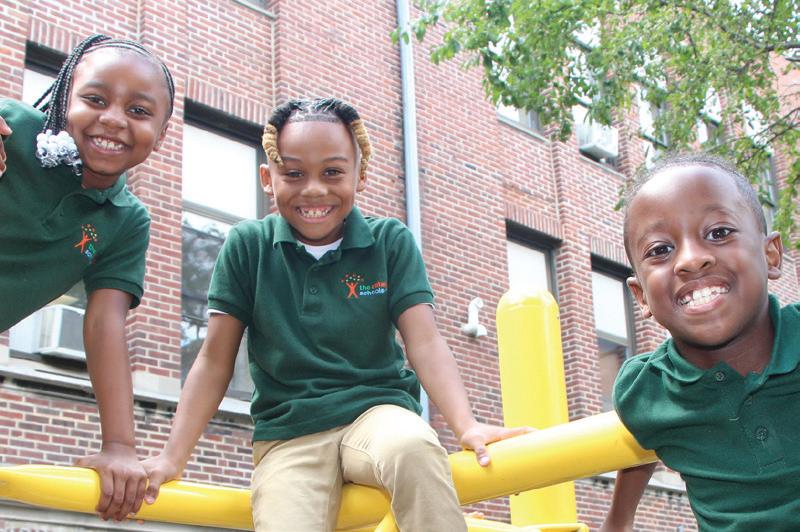








HECTOR CERVANTES
Contributing Reporter
October is National Book Month, a celebration of reading, writing and the transformative power of books. In Chicago’s North Lawndale neighborhood, Open Books brings that celebration to life every day, ensuring youth and families have equitable access to the tools and spaces they need to become lifelong readers.
This nonprofit partners with communities across Chicago to break down barriers to reading, offering libraries for schools and daycares, literacy programs, large-scale events, and choose-your-own-price commu-
nity bookstores.
Open Books has been active for nearly 20 years, with its North Lawndale programming space at 3812 W. 16th St. officially opening in 2023. It is part of the North Lawndale Reads campaign that promotes grade-level reading and makes books widely accessible throughout the neighborhood through initiatives like Little Free Libraries, book nooks and community events
Chelsea Ridley, director of Community Engagement, leads literacy programming and partnerships across Chicago neighborhoods, overseeing initiatives like North
Lawndale Reads. A dedicated advocate for community-engaged art and education, she also co-founded the Lawndale Pop-Up Spot, a community museum celebrating local history and creativity.
“Since we launched, we’ve given away about 160,000 books in North Lawndale alone. That means every family, and every person in North Lawndale should have at least one book, if not many more. We’ve been steadily chugging away at this work for the past few years,” Ridley said.
Open Books North Lawndale location is a free bookstore and programming space offering hands-on, creative out-of-school

activities for youth and families. Tuesdays and Thursdays are open to 4th–8th graders after school, while Saturdays welcome all ages for drop-in reading, writing, and play No registration is required, and all books and programs are free.
By placing books at the heart of North Lawndale and other neighborhoods, Open Books fosters a love of reading, strengthens community connections and opens doors to lifelong learning for readers of all ages.
“We’ve gotten a lot of middle school boys invested and interested in our programs They come every week and participate fully. It’s an amazing accomplishment because people are always asking, ‘How do we get boys involved in something other than sports or video games?’ We’ve seen a lot of success with that in our 16th Street programming space, and we’re super happy about it,” Ridley said.
According to Ridley, North Lawndale has been outpacing Chicago Public Schools in literacy score improvements since Open Books began its work in the neighborhood. She emphasized that this progress is the result of strong collaboration with local organizations, including the North Lawndale Community Coordinating Council and the Quality of Life Plan. Ridley added that it’s rewarding to see
both Open Books’ and the community’s efforts paying off in support of children’s education.
Ridley describes North Lawndale’s Open Books space as a small but lively hub filled with free books and creative activities. The space offers a welcoming, non-school environment where kids can drop in after school to read, play games, do art projects and connect with peers.
“When you walk in, you’ll see rows of bookcases lining the back wall, filled with free books, from baby books all the way up to adult titles. We want to make sure books are always present and available, so when kids come in, they’re like, ‘Yay!, books!’ We want them to feel that it’s normal to be surrounded by books all the time,” Ridley said.
Ridley believes the location serves as one of the few “third spaces” in North Lawndale where youth can simply feel safe, supported, and free to be themselves.
“There aren’t many third spaces, what we call places outside of home and school, in North Lawndale where youth are truly welcome to just come in and be. Through this space, we’re able to gently introduce literacy programming and assess kids’ literacy needs without it feeling like school,” Ridley said.
For North Lawndale Reads, the focus was message saturation and community engagement. The program shared pro-literacy messages throughout the neighborhood, via ads on the Blue and Pink CTA Lines, buses, bookmarks, and magnets, highlighting that North Lawndale is a community of eader It also hosts the signa-

ture Back to School Lit Fest, which draws over 600 attendees each year.
“The first thing Open Books always does is ensure what we call book access. Every child should have access to high-quality books that are engaging and relevant to their lives. We receive nearly a million books donated to us annually, and we sort them so that the best-quality children’s books go directly to North Lawndale, Little Village and our other priority neighborhoods,” Ridley said.
Ridley explained that books are distributed to classrooms, book nooks, Little Free Libraries and community events, including a Christmas giveaway. She emphasized that the goal is to ensure kids have access to books they actually want to read.
““We’re never going to give a kid just one book and say, ‘Here, this is the book you have to read.’ We always bring plenty of books so kids have choice and agency, allowing them to pick what they actually want to read. We include graphic novels, comic books, and all the types of books that interest them, because they won’t read if
they’re not engaged,” Ridley said.
Open Books also promotes adult reading by providing adult books in all of its spaces, encouraging parents and caregivers to read alongside their children to model positive reading behavior. Beyond providing books, the organization’s education team works to ensure both physical and metaphorical access to reading, helping families engage with books meaningfully. They offer workshops for parents and caregivers on how to make reading an enjoyable experience for children. Additionally, Open Books staff work directly with firstand second-grade students in North Lawndale schools, providing one-on-one support to foster reading skills and a love of books that are engaging and reflective of the community
Open Books relies on partnerships with organizations and community members to carry
out its programming and mission. As the nonprofit prepares to expand its campaign to Little Village, it invites local groups and individuals to get involved, offering opportunities to connect via coffee meetings, Zoom, or email to support lifelong learning for residents of North Lawndale and Little Village.


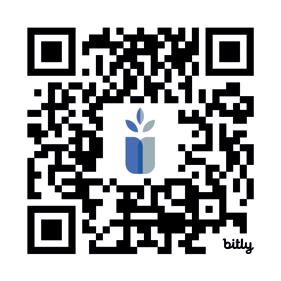






In recognition of Breast Cancer Awareness Month, Loretto Hospital is offering free mammograms for uninsured and underinsured residents of the Austin, Berwyn and Cicero communities throughout the month of October.
Loretto Hospital. “Loretto Hospital is determined to ensure our community has the best preventative and routine care possible, regardless of insurance status.”






















One in eight women in the U.S. will face a diagnosis of invasive breast cancer during their lifetime. It ranks as the second most common cancer among women and is also the second leading cause of cancer-related death.
























“Early detection is vital for individuals diagnosed with breast cancer and providing access to this care annually is one of our top priorities,” said Mary Rinder, Director of Diagnostic Imaging at













































Loretto Hospital offers state-of-the-art breast tomosynthesis technology, which utilizes lowdose x-rays to produce a threedimensional image of the breast tissue, thus helping radiologists detect cancer when it is most treatable. The 3D images can separate breast tissue that may appear overlapping in 2D imaging. This advanced imaging improves accuracy in detecting abnormalities, reducing the need for follow-up scans and unnecessary biopsies.
Free screening mammograms are available to residents of Austin in the 60651, 60644, 60624, 60623, and 60612 zip codes, as well as to residents of Berwyn (60402) and Cicero (60632 and 60804).
Women outside these zip codes can take advantage of Loretto’s reduced rate, $75 mammograms throughout the month of October. Certain restrictions apply. For additional information, call 773-854-5220.
This content is made possible by our sponsor and is independent of GCM’s editorial staff.